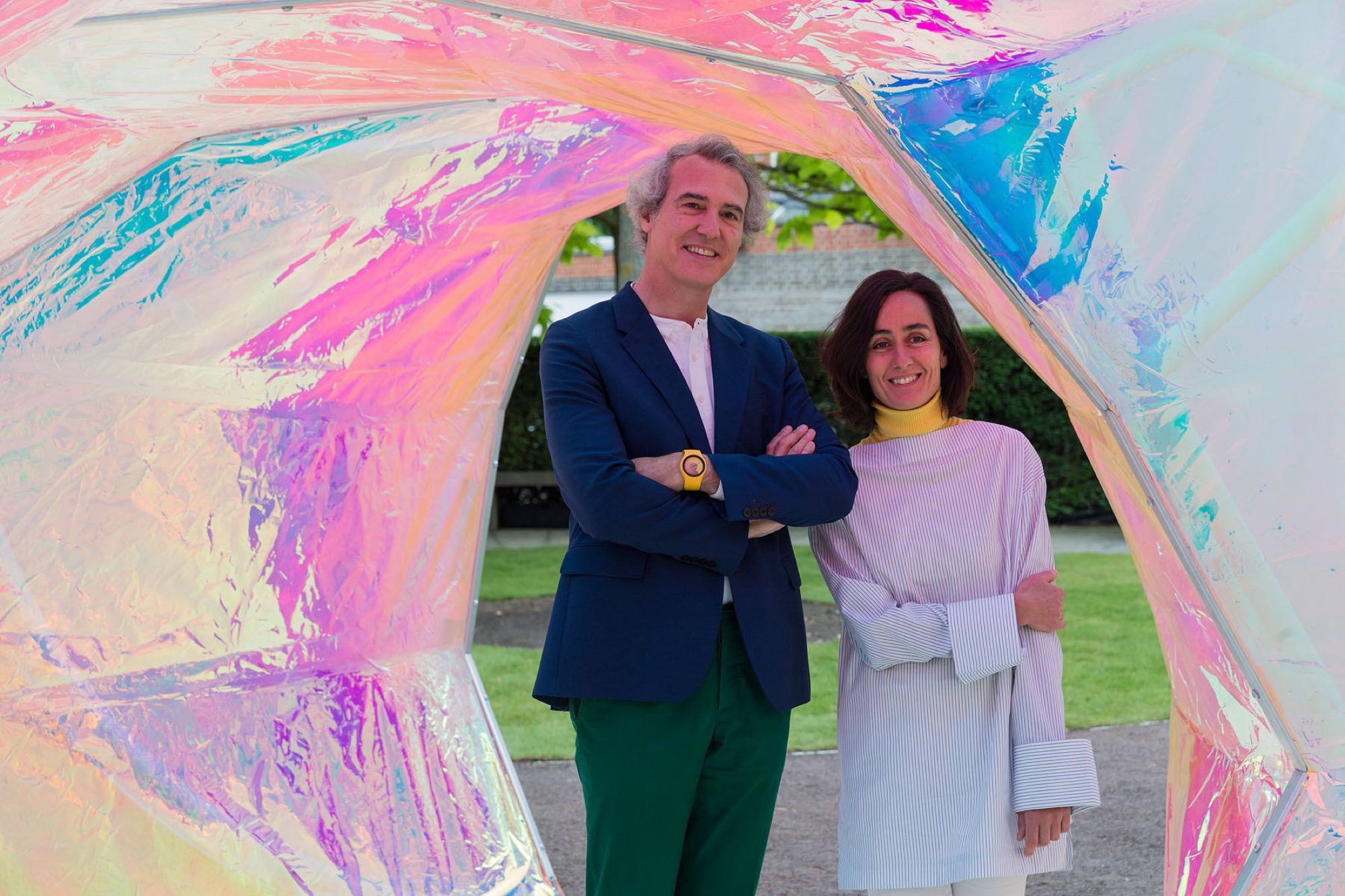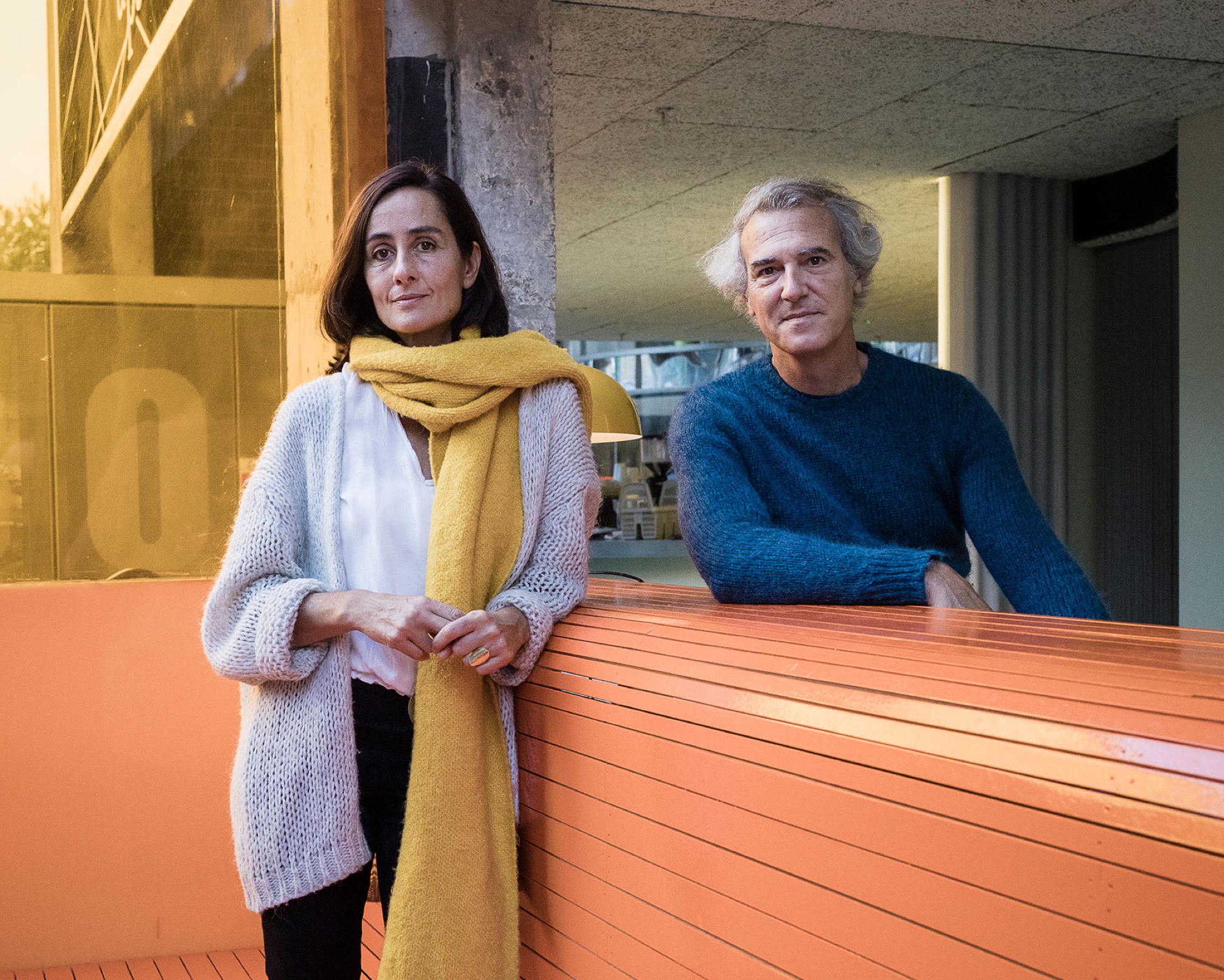
Interview: Phạm Hà Thu
Edit: Trần Hiếu Anh Nguyên
Photo: Iwan Baan
The first time we got to know about SelgasCano was in 2015, they were off the radar the time before. Lucía Cano and José Selgas are the two founders of this Madrid-based architecture office since 1998. In February 2023, we had a chance to interview architect José Selgas, the meeting provided more insights of their ways of practising architecture.
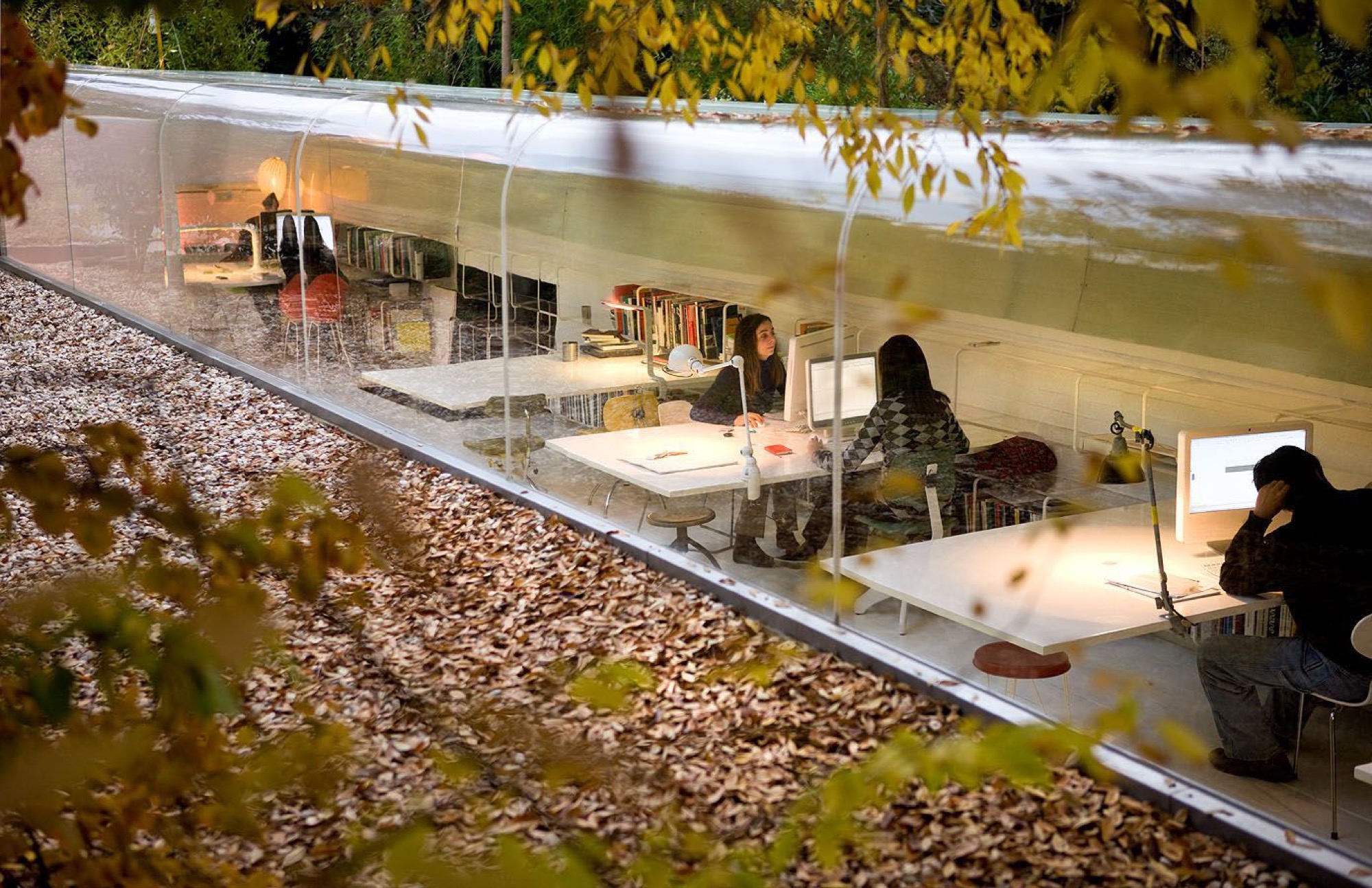
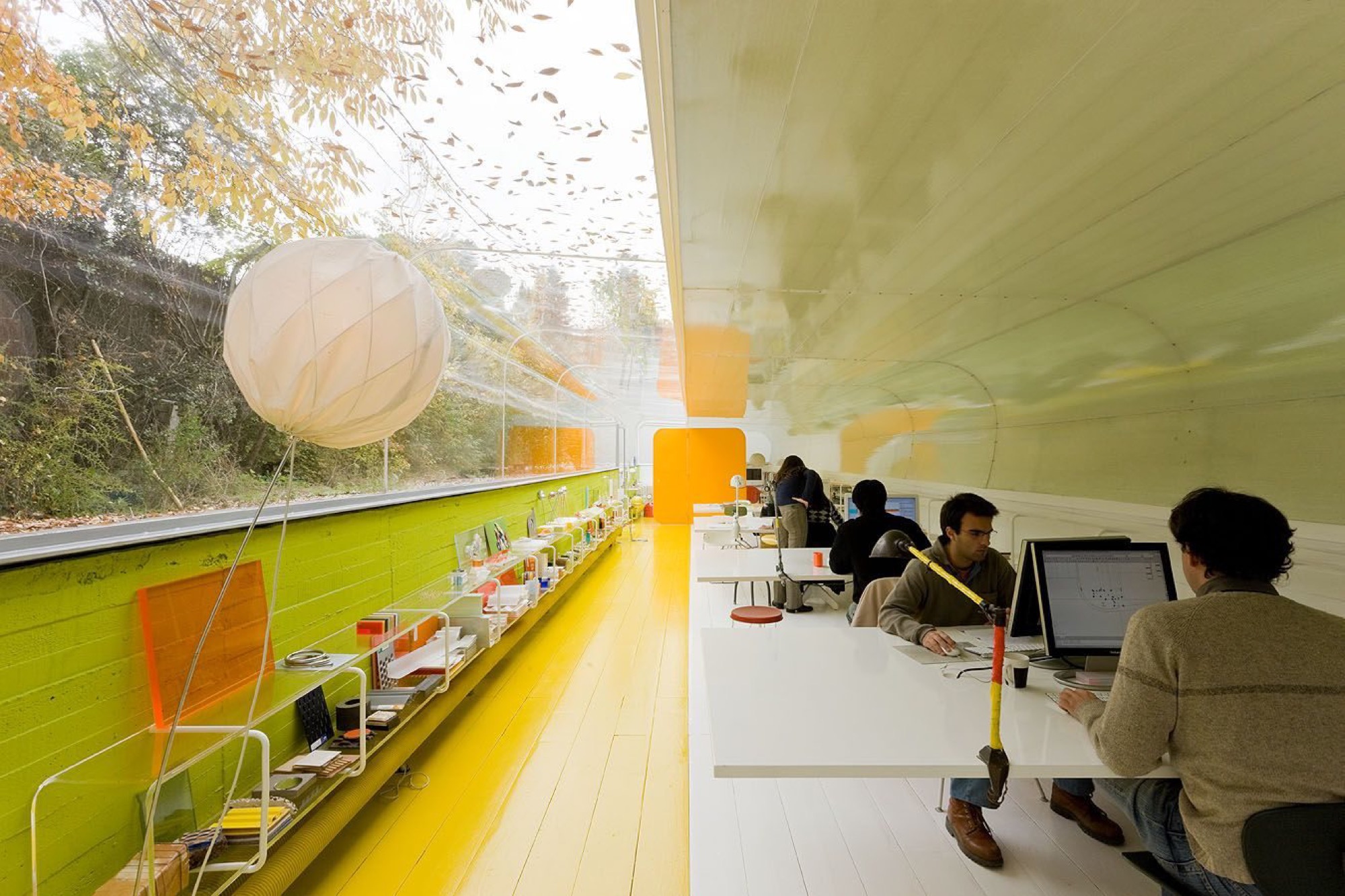
EFFORTLESSLY CREATIVE WEBSITE
Well, I think our website is a reflection of our work and our office. We have been always a small office. We could, in some point, grow but we never did and we just decided to keep it like so. Because Lucía and I, we are partner in life and work so we decided that we wanted to be part of the whole process in architecture from the very beginning to the last touch at the construction site. It is fundamental for us to control the amount of work that we have at the office. We do not do what we think we do not need. And I guess that also is related to the website.
We used to have a very complex one. It was a lot of work at some point with a lot of humour but it was difficult, we have no one to take care of it. There are only architects in our office. And at one point, we decided to have our base website – Google. Because at the end, all of our works more or less is on Google, just simply search ‘selgascano’ and you will see everything. Probably it has been 10 years plus that we get the website like so and it is still the same, we never touch it.
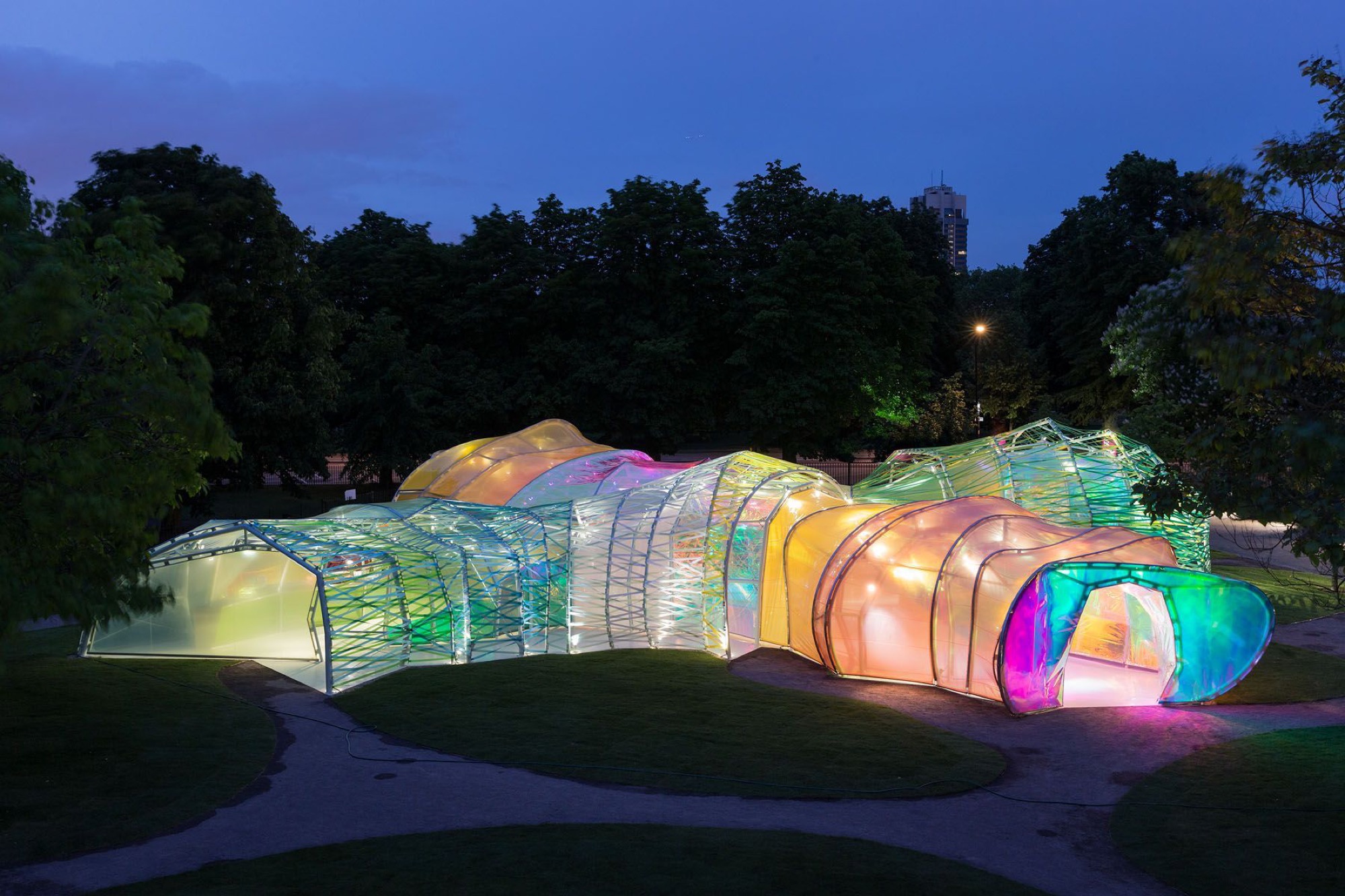
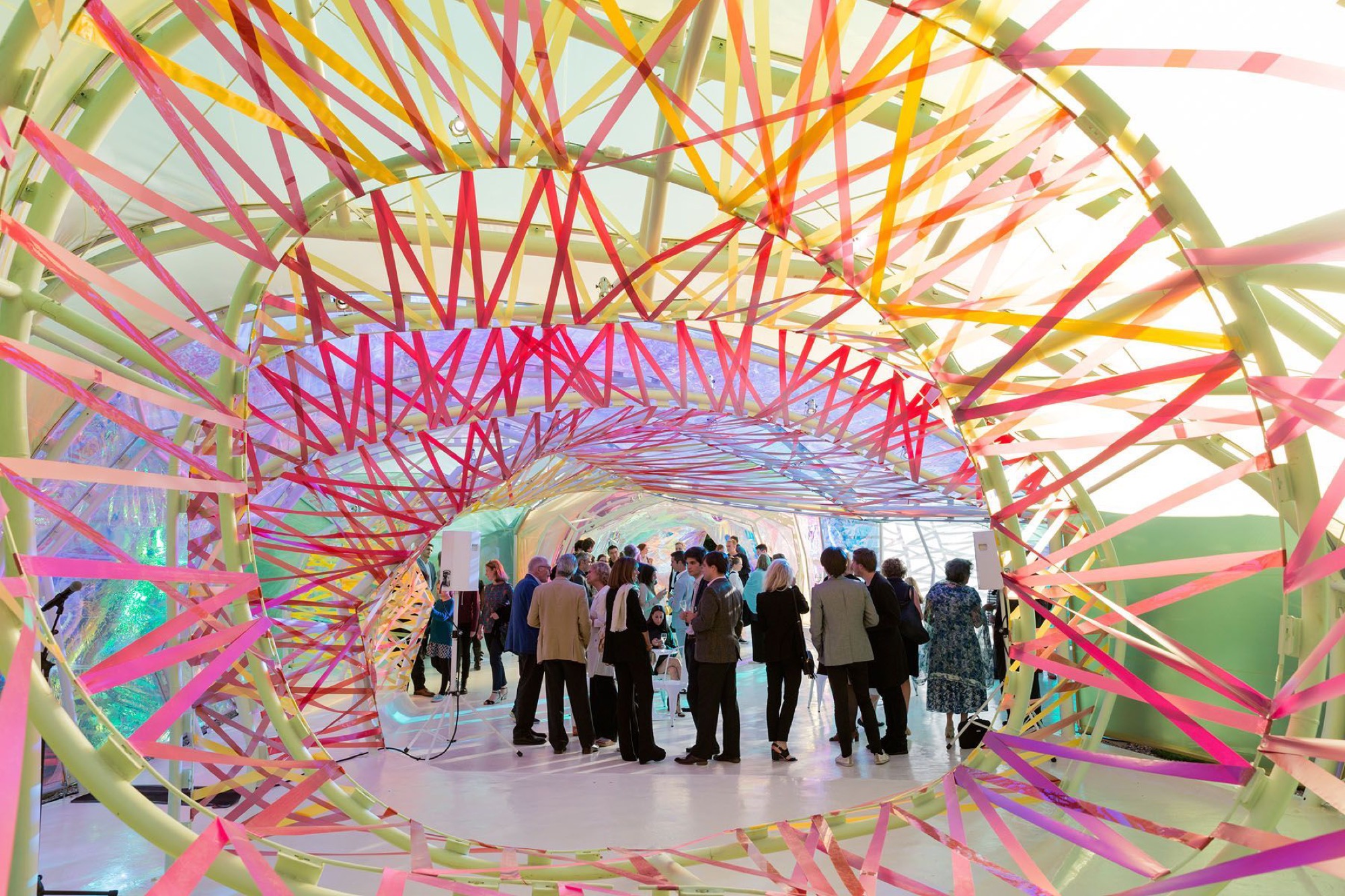
SELGASCANO HAS THEIR MODESTY, ALWAYS
There are only architects in our office and they focus on the work of the office, on the architecture. Everyone is in the same position, everyone is doing everything. We physically have 7 people here and 3 more in other places. We are moving continuously from one point to the other, they can do small detail of whatever big or small, or they start from the beginning of the project. At some point, it is a little bit of chaos. But we like that also, we quite enjoy the feeling that we are never balanced. It works well with us.
After completing Serpentine Pavilion project in England in 2015, we received many invitation for lecturing from universities and institutions. The number of calls we had were insane with the same purpose that they wanted SelgasCano to give lecture and we simply said no to all. Of course we could say yes but it is impossible. Lecturing takes a lot of time although we love to do it. The problem is that you need to do many things such as to prepare the presentation, then you need to travel and so on, it might take somewhat a week. I mean we lose or we gain. We love travelling, knowing people, we always say no to online things, samples, lectures because we want to be there at the place, that is fundamental to us.
We have this view for our profession as well. For example, we sometimes have clients that tell you that they want us to come up with an idea or a concept and they will develop it by their people or local architects or whatever but we say no.
We want to be involved from the beginning to the very end. For us, it is like creating a recipe that we want to cook, and we are more the cooks than other things. It is much more interesting and entertaining that part of the work.
José Selgas
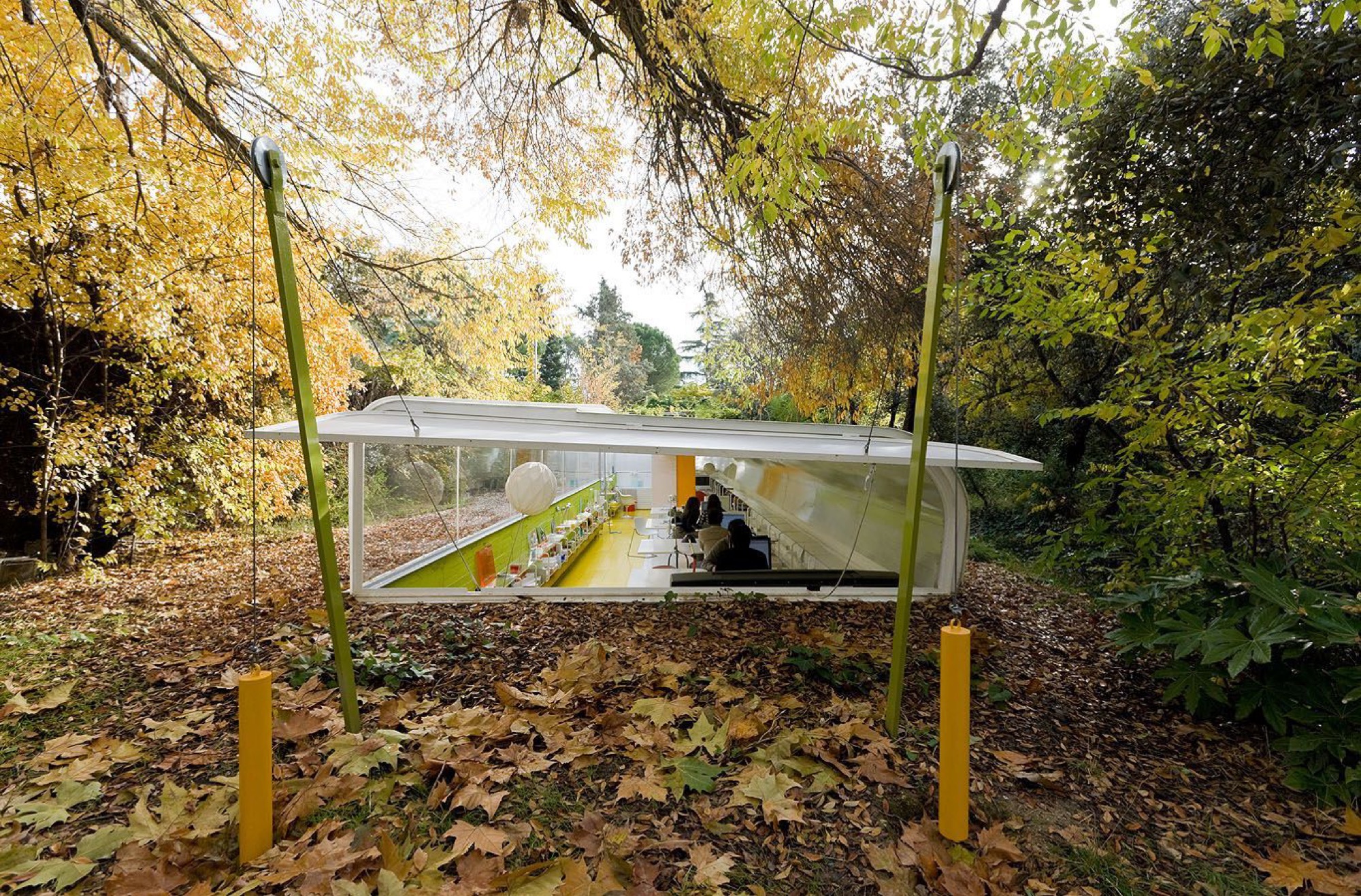
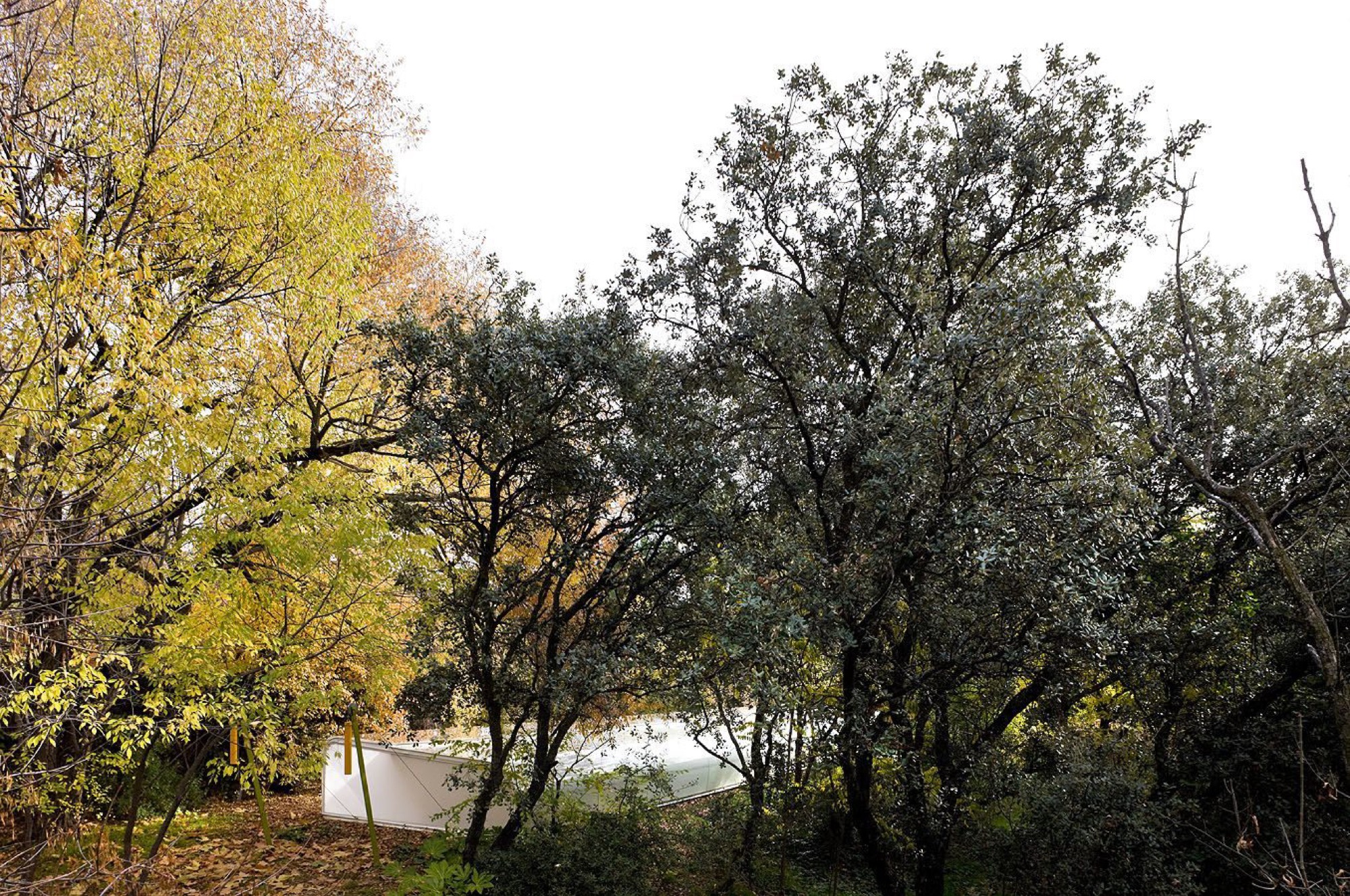
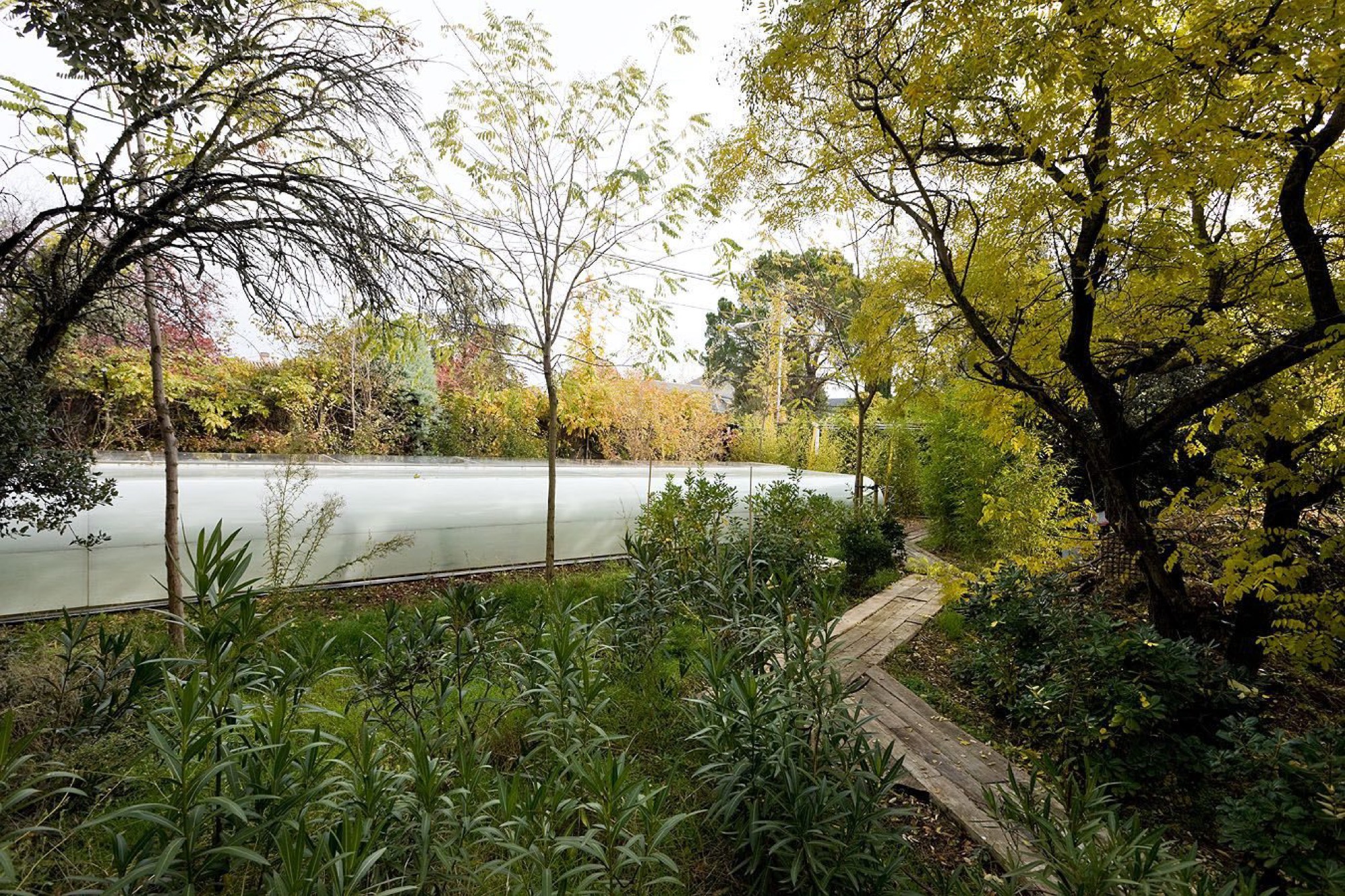
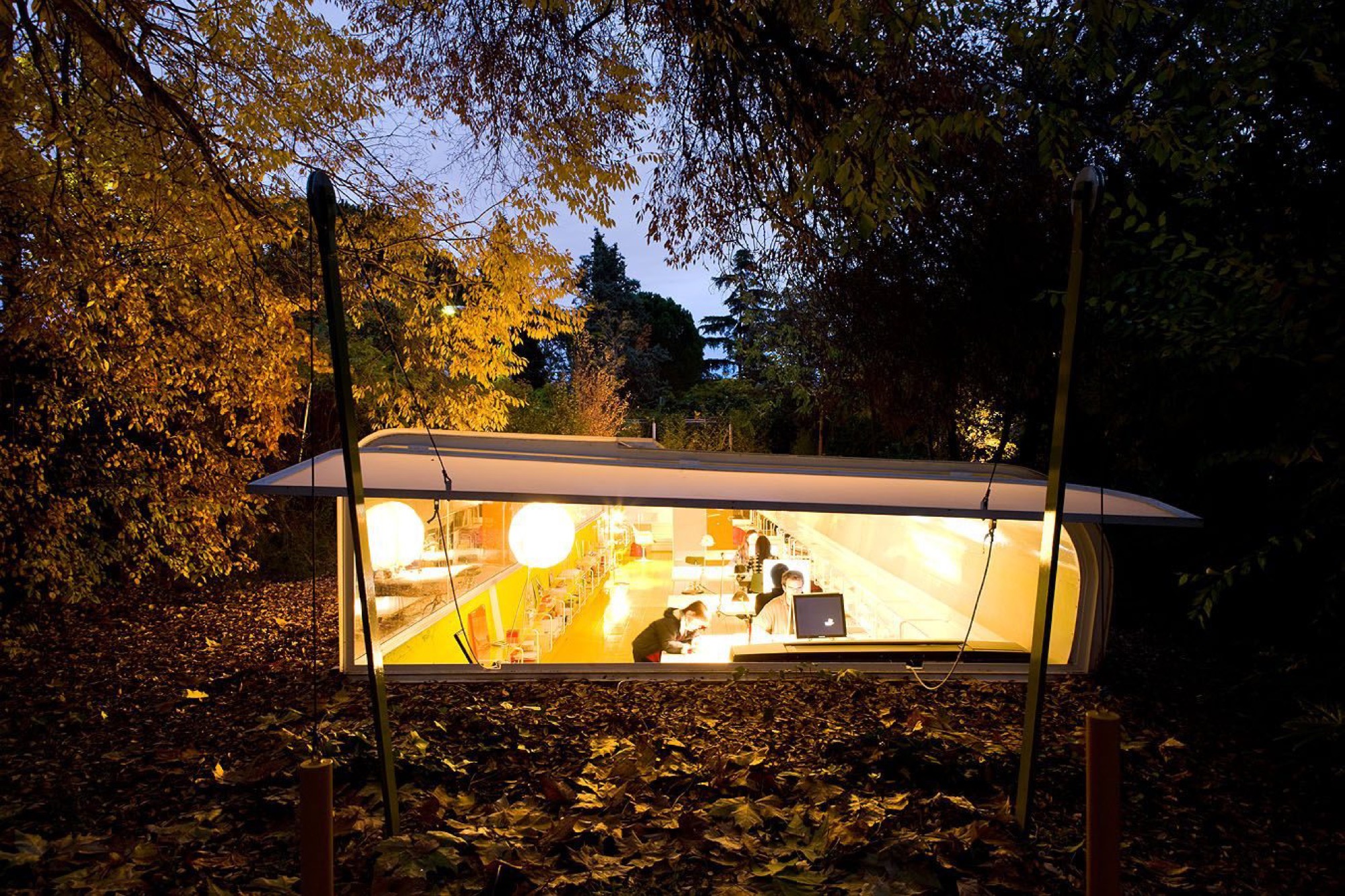
NATURE IS AN INDISPENSABLE PART OF SELGASCANO
THEIR OFFICE AND RESIDENT ARE LOCATED IN A NATURE-SURROUNDED SITE
The first time our own office went public in which the photos was taken by photographer Iwan Baan, he is a close friend of us. It takes around 15 minutes driving from the center of Madrid (Spain). Everywhere around the world, people are used to the real wood with wild animals, when they see our office they were like ‘Oh my god, it has to be scary no? What do you do if the serpent coming in?’. Well, there is no snake here, I mean it looks like the wood but it is pretty much an environment surrounded by the landscape, simple as that!
You are here with the nature always, you can see different moments of the day. You feel perfectly the rain, the heat of the sun, the movement of the climate, the seasons. Well even though during the summer here is very hot and dry, we have no air-conditioning in the office and everyone sweats in the office. We have to open out both sides of the office to get air and cool down the temperature. This way gives us the chance to feel the environment.
Julio Cano Lasso is Lucía’s father, he was a very lovely man. He had a very big passion for nature, for plants, for everything. Lucía got this passion too, probably from him. Lucía knows a lot about plants, perhaps the most among people I have ever known and she teaches me a lot about plants as well. In my case, I always have that passion. So that the relationship with nature for us has been very important. I think it is important in architecture because it is everywhere from the beginning.
“I AM NOT YOUR BOSS”
At SelgasCano, I and Lucía, our role are exactly the same, we fight a lot but also agree with many things as well. Everyone is open to others in our office and we share everything, most of them are with us for a long time. I guess they are happy, otherwise they must have moved elsewhere. They know us, we know them so it is very easy when we work together and they will understand immediately, exchange opinions and giving ideas.
When we have a project, to the point that it looks like it has been finished or will soon be finished, we then change the concept, we do not think it is enough for the whole project. I think they are used to it, they know that this is going to happen continuously. Sometimes it is coming more from them, sometimes from us. But of course, I am not going to say “you are the boss” or “you need to have boss”, I mean it is very mild because it is easy to work with them. We respect a lot the people that are working with us, it is more like they have the same quality, the same idea, the same thing. They know much more than us in many aspects. It is a continuous collaboration. There is not really a certain role in the office. You can say and do whatever you want more or less. At the end, this is the matter of knowing someone with the passing of time.
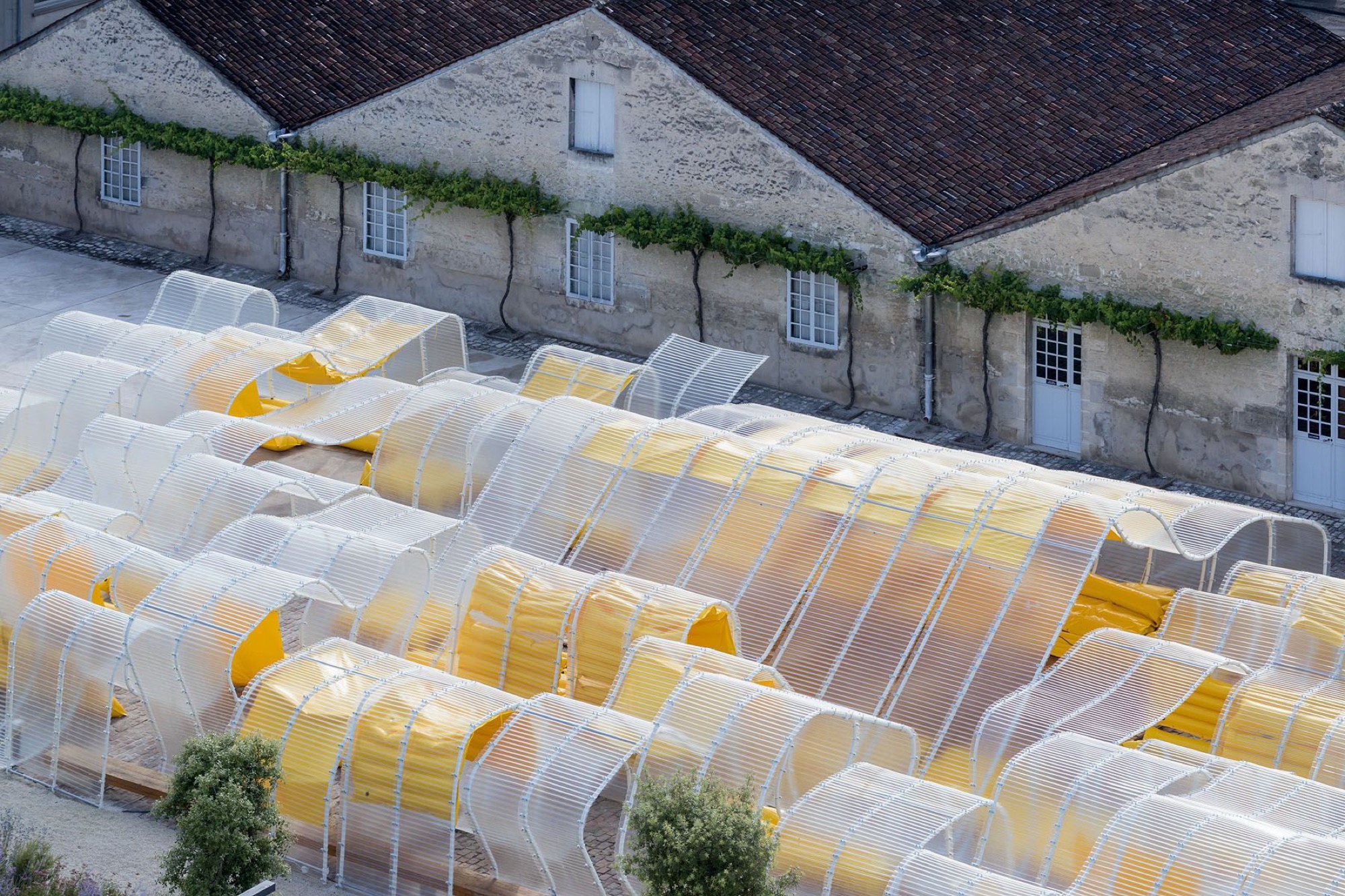
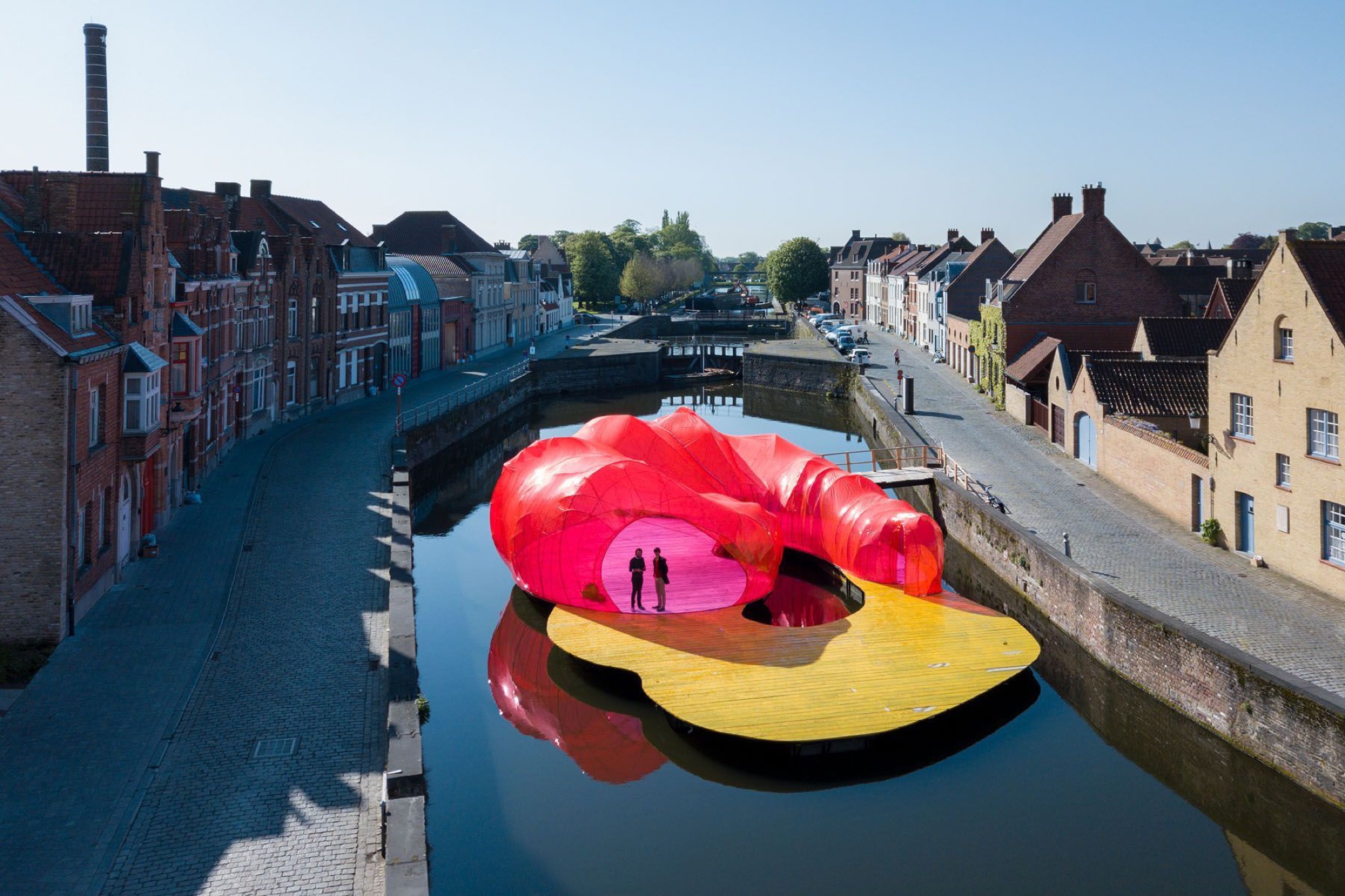
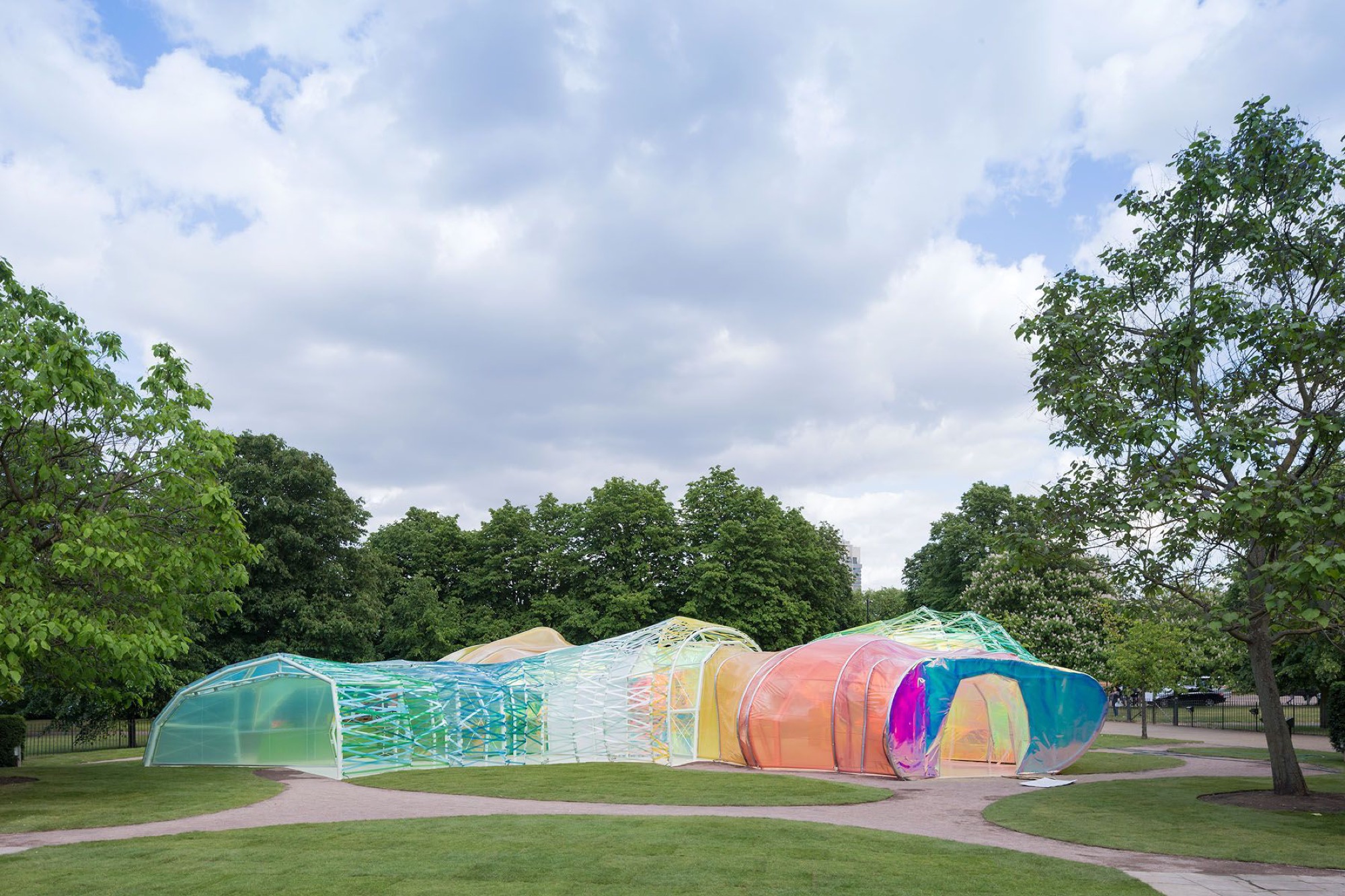
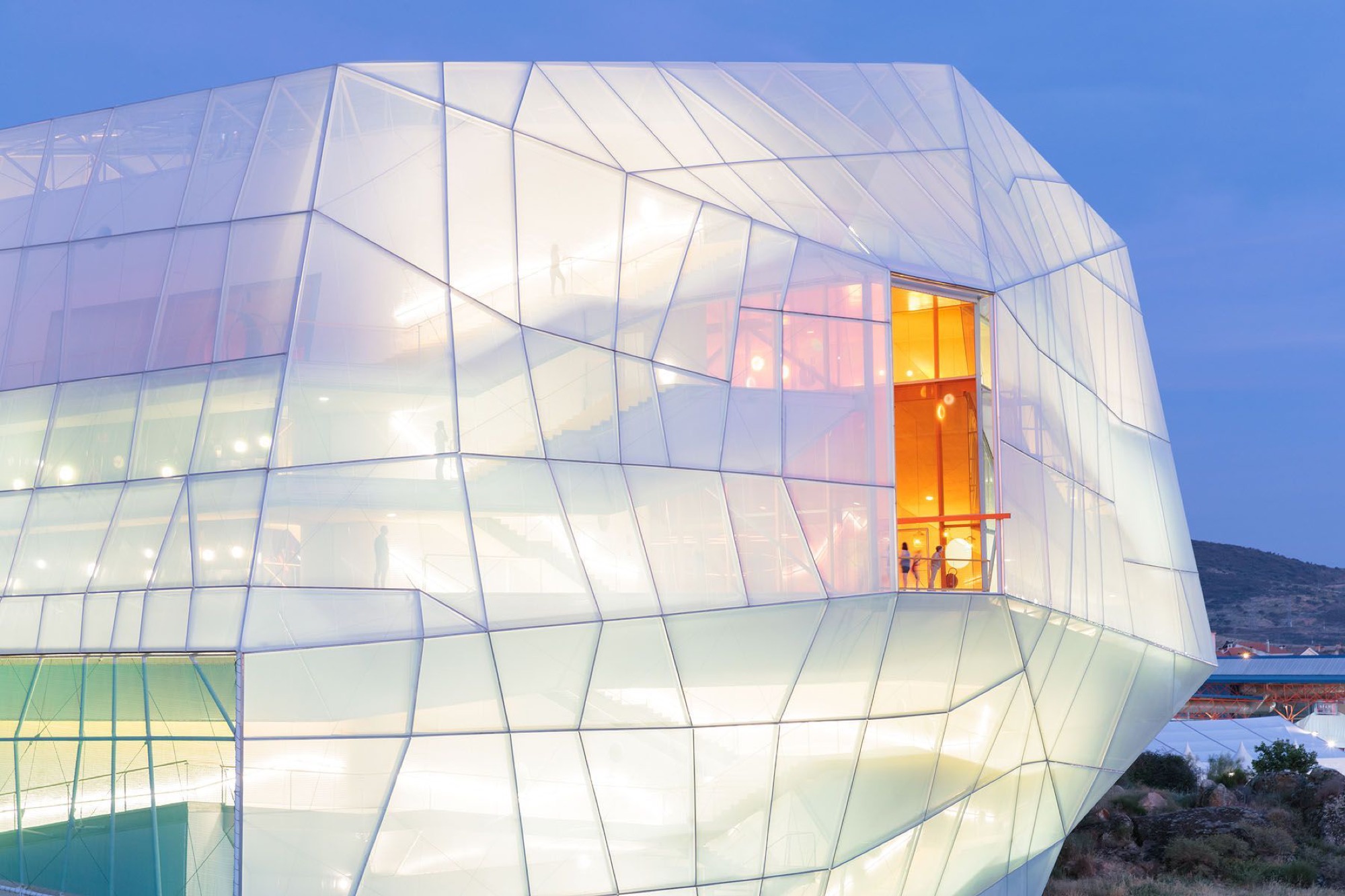
FOCUSING ON LIGHT STRUCTURES AND THE SUSTAINABILITY OF A CONSTRUCTION PAIRING WITH THE FREE SPIRIT, YET, FINANCIALLY EFFECTIVE IN ARCHITECTURE
I think lightness is something that we understood many years ago, it is related to energy. The mass is related to energy is a straight formula. The bigger mass you are using, the more energy you need to fabricate it to transport to the site. The lightness is very important to the planet in the way that is less energy needed. You need to produce, transport and install them. Lightness is also related to economy, less energy means lower price. We rarely have clients that can provide endless budget to spare. They have very small budget, and we have to deal with it. Hence, we learn the cheapest materials, ones that we generally use and we are happy with them.
Concrete is an expensive materials and typically used in constructions. A part of our walls are concrete-made, the wood plates used for molding are then recycled to be our ceiling beams. We use concrete because it contacts with the ground, the water and it is easier to deal with concrete in that case. The rest of the wall is built from different materials and mostly here we use wood for the structure.
We are comfortable with any materials. We are happy with wood, steel, plastic or glass, whatever we need to, depends on the projects and the locations. Economy is probably the most important thing for our client at the end because they need to pay for that. We have a joke with many clients that we are actually the clients and they are the architects. Sometimes the clients arrive with some ideas and we say ‘sorry, it’s too expensive, we don’t have money for that’. We are trying to lower the budget and ensure the quality because we know it is important at the end.
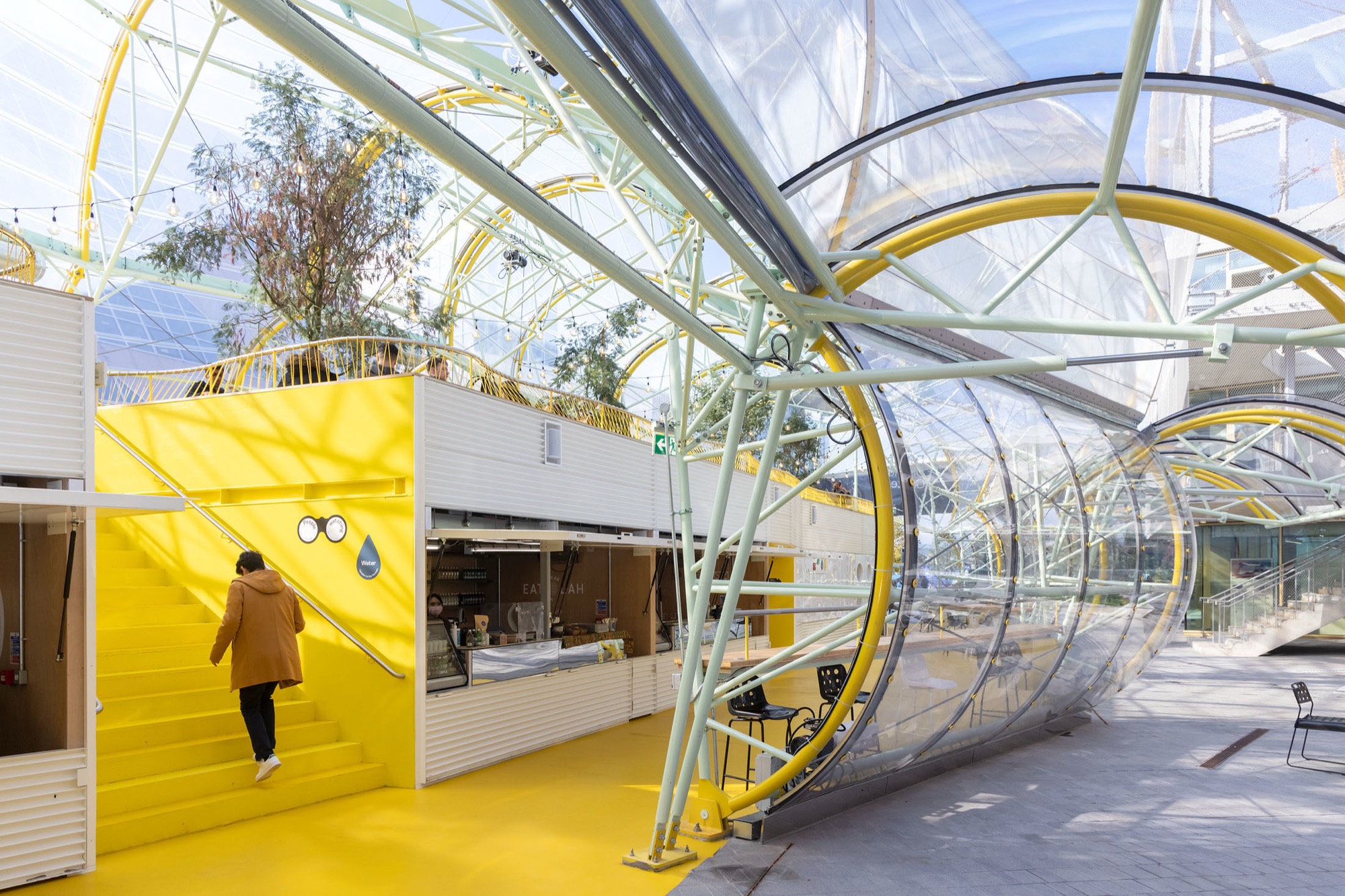
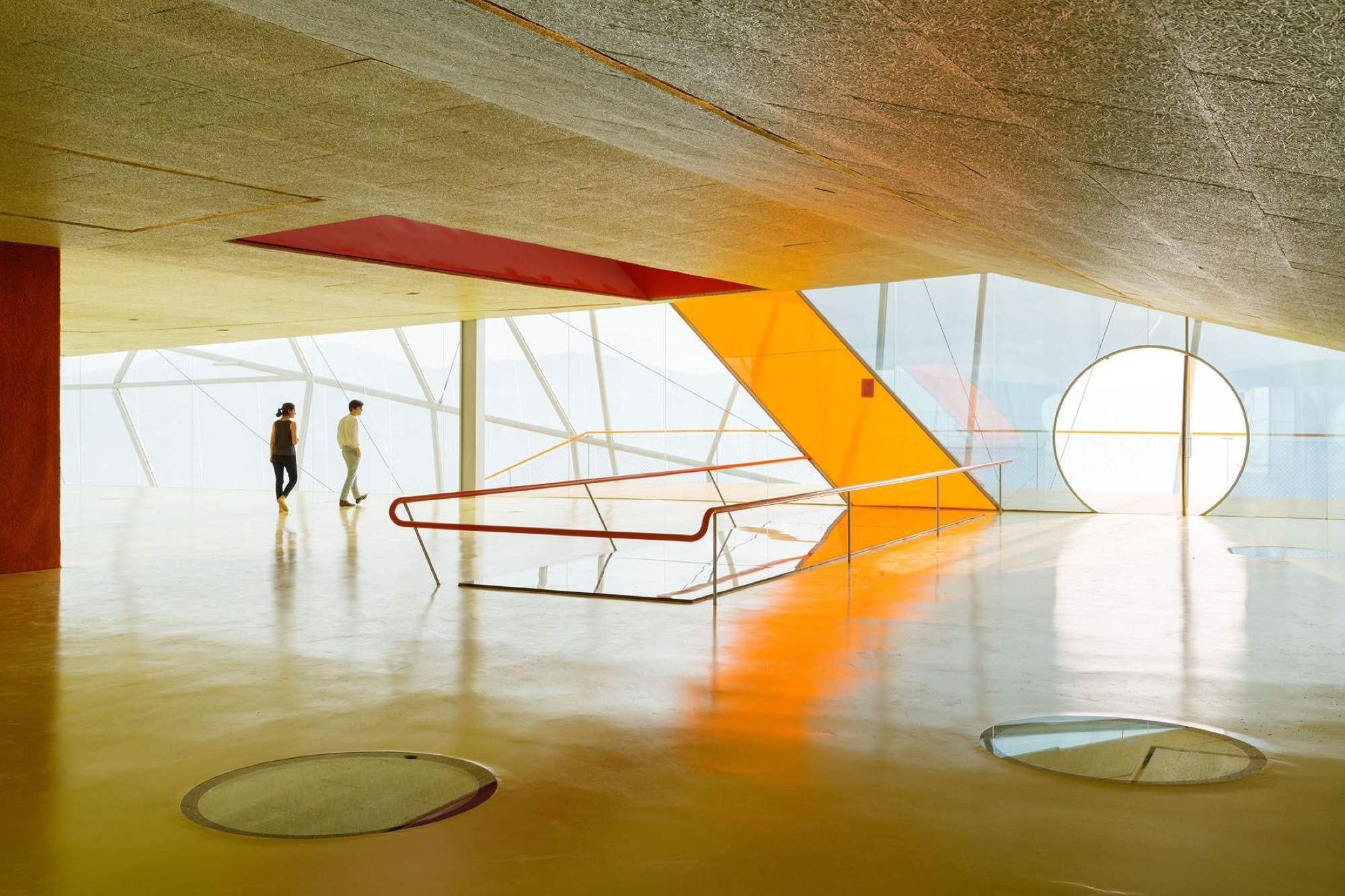
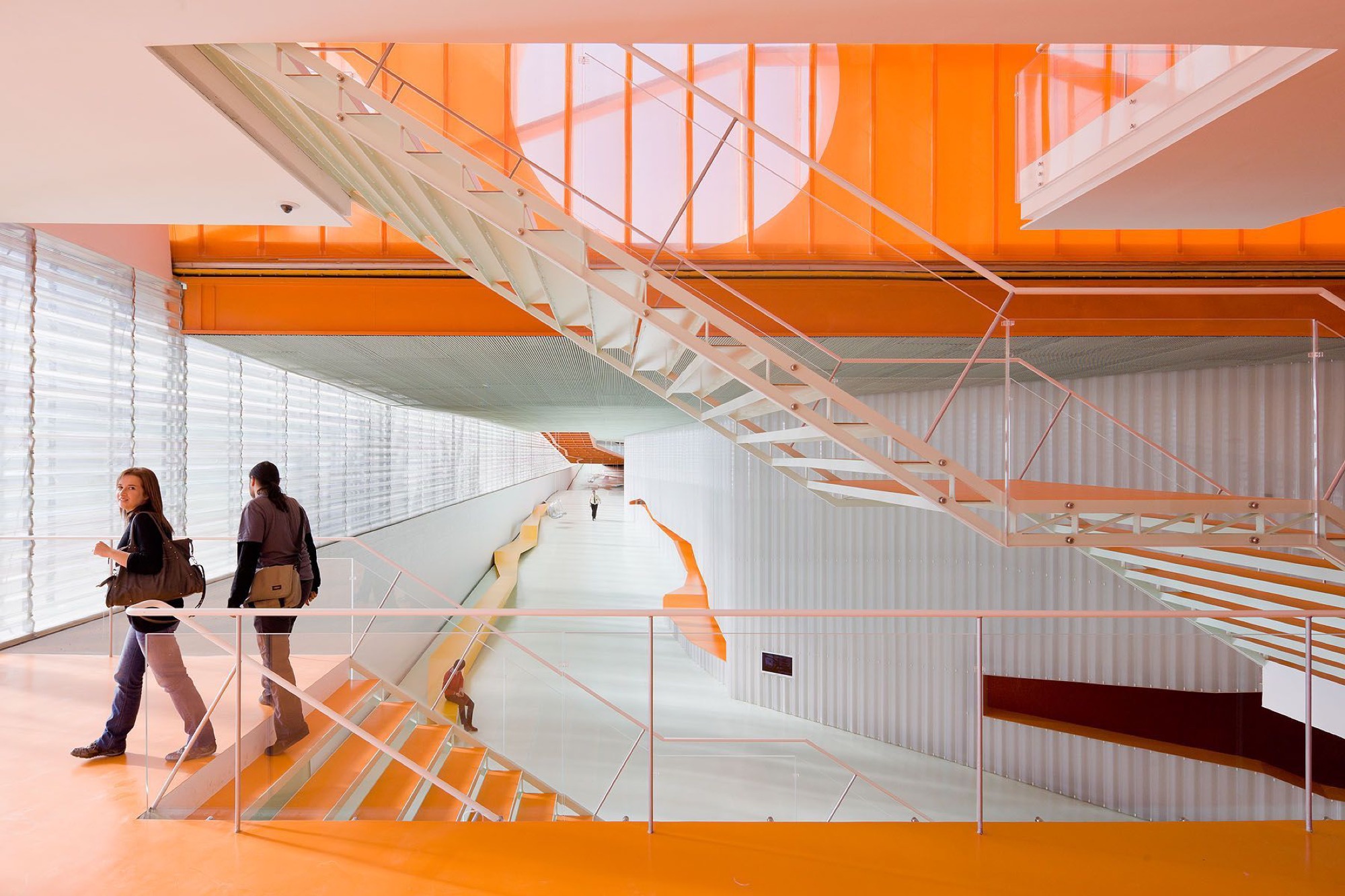
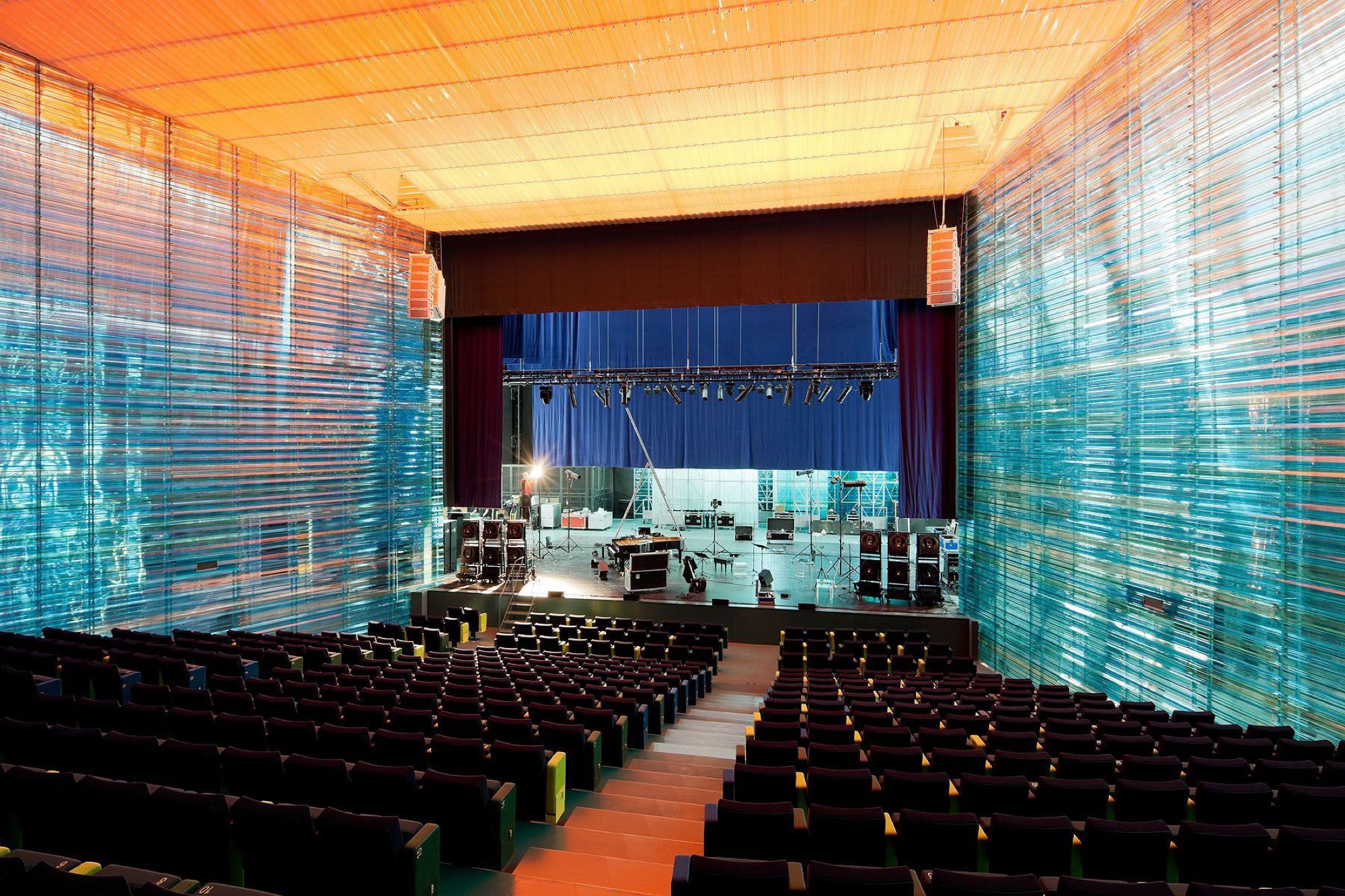
Currently, we are working on some projects in other places in the world with many limitations with work and material. For example, the project in China, it is very complicated since they are very familiar with concrete. Or in the US, wood is their main thing, whatever wood material you want to use seem to be too expensive right now and you need to use it very carefully. So it depends a lot on where you are working at or whatever you have around.
USING SALVAGED MATERIALS
We try using salvaged materials sometimes; for instance, the recycle process of reusing concrete wooden mold as ceilling beams. In spite of the possibility of recycling materials in some cases, this is an uneasy task. Occasionally, it costs higher than buying new materials.
Serpentine Pavilion was sold after being exhibited in London. After the buyer came and paid, they decided to move it to LACMA Garden – an art complex in Los Angeles. We wanted to preserve all the materials after dissambling and send everything to the US of course. But to preserve all the ETFE, it needs a lot. If we move, the fee is 70,000 pounds and they got a price straight from the factory for the new ones was 30,000 pounds. Obviously, the client went for the cheaper option. To reuse the materials, you need to dismantle the thing, employ a lot of people to pack properly and so on. And I cannot understand why it is too different in price.
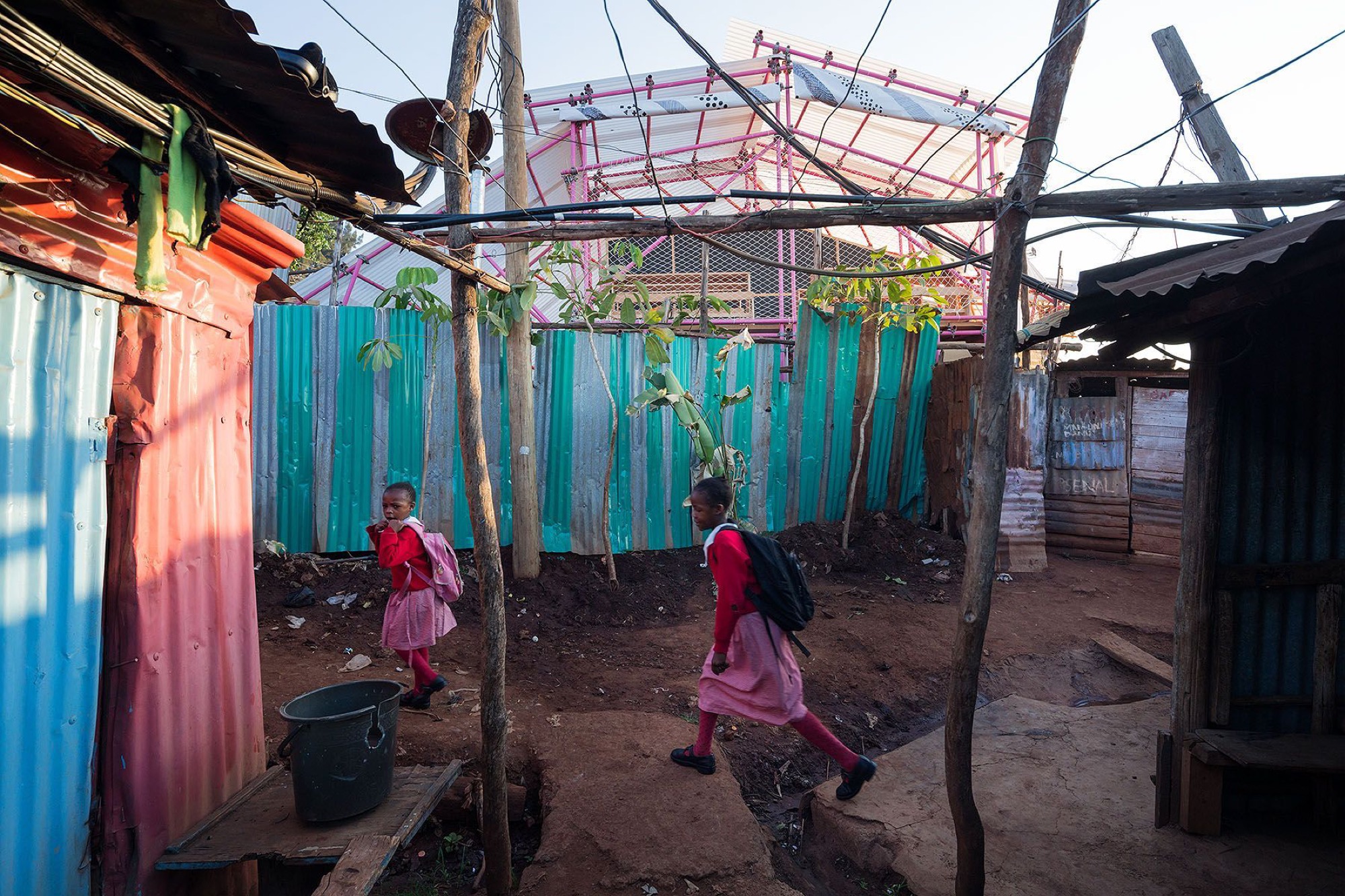
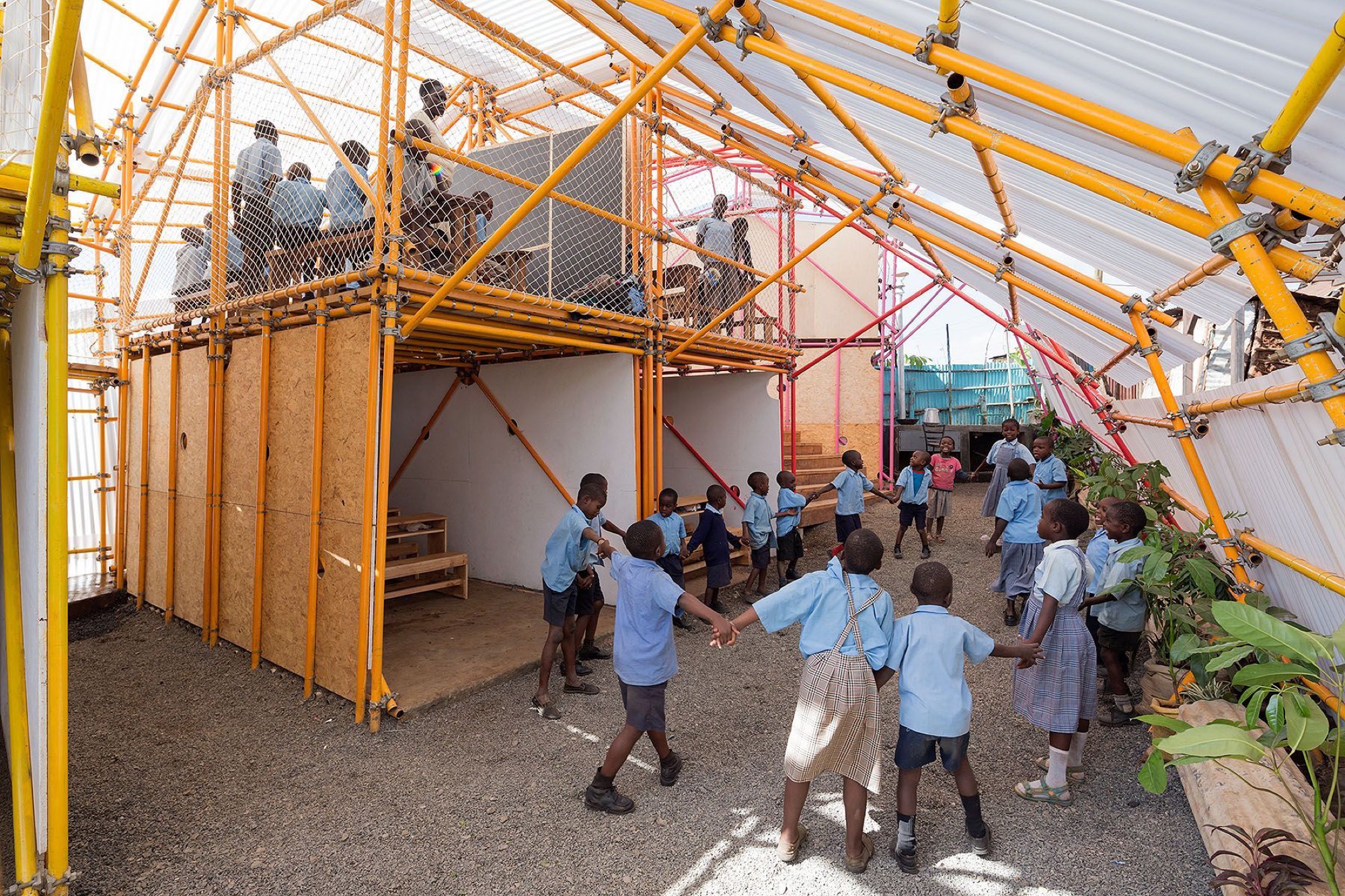
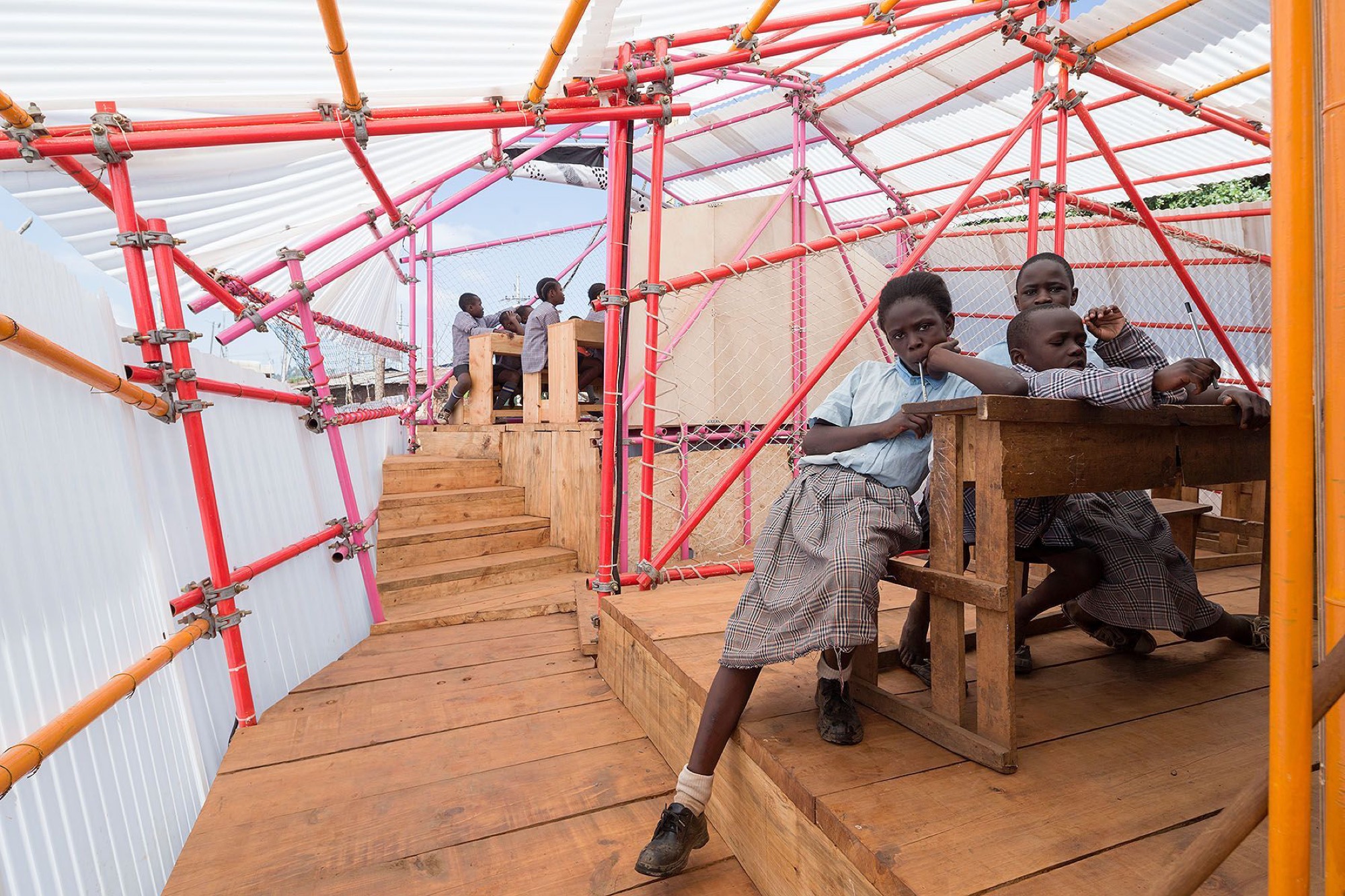
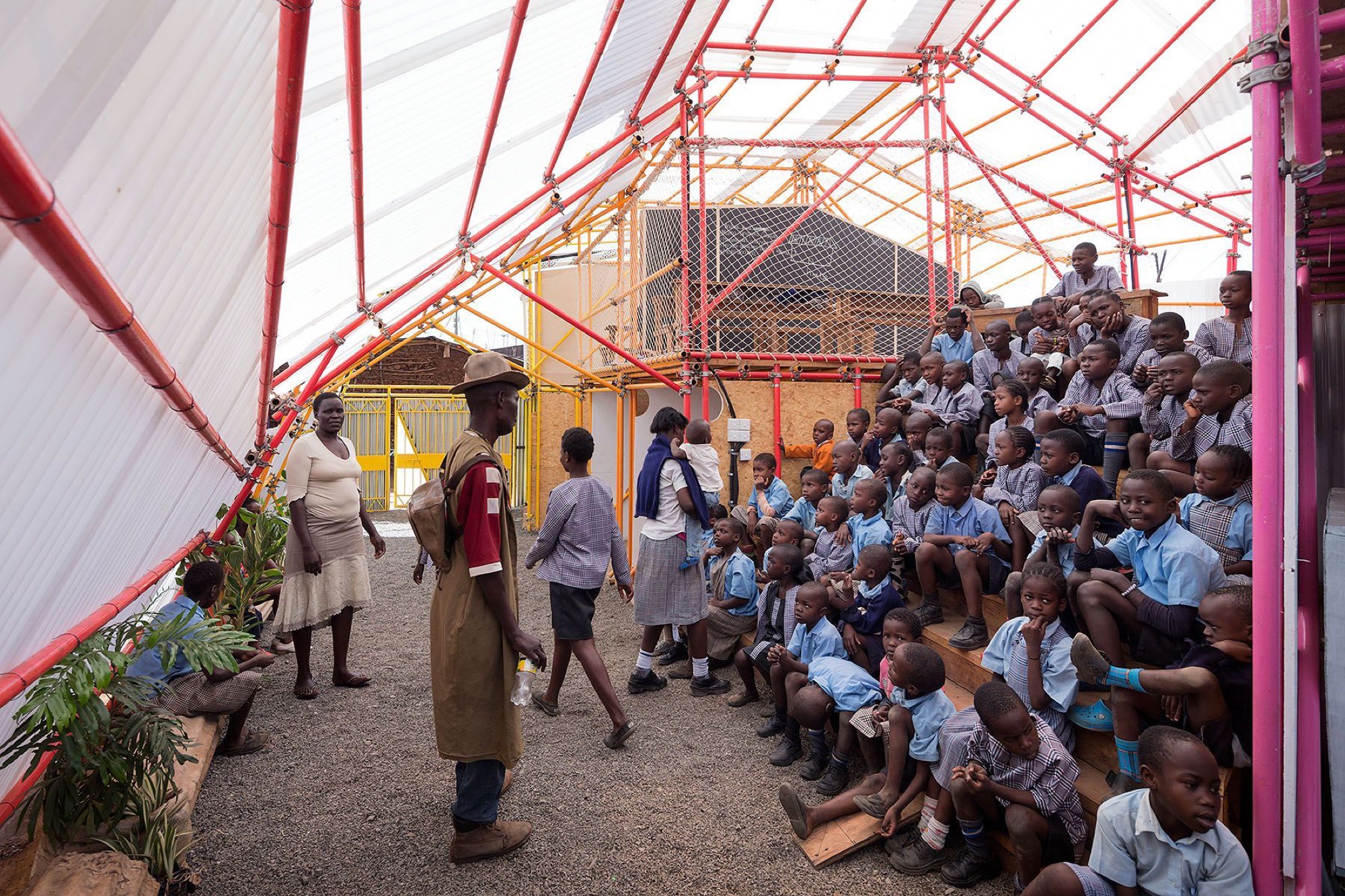
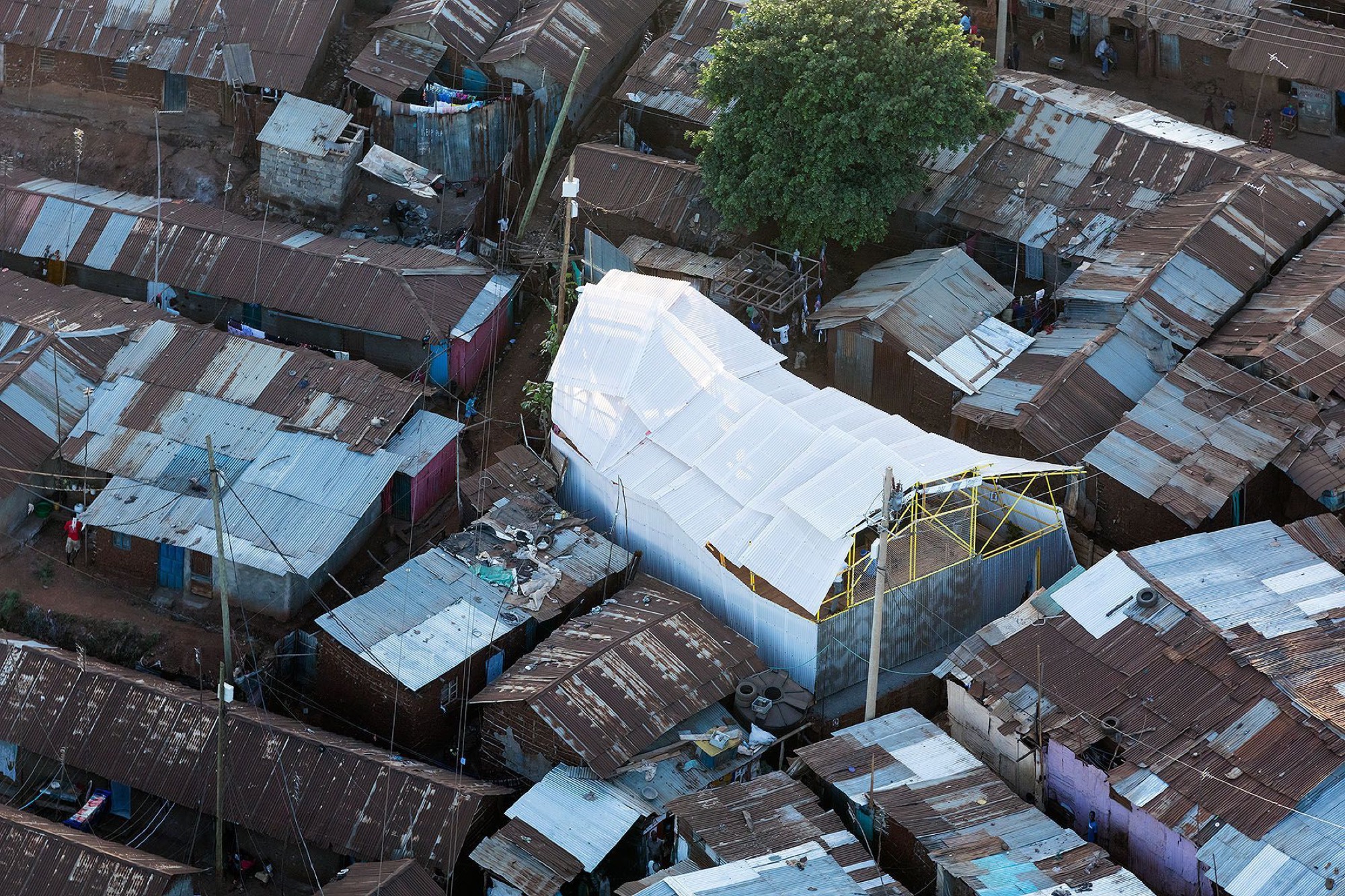
Kibera Hamlets (2016), Nairobi, Kenya
Using salvaged materials is not your decision. Most people who practice this usually have what they need on hands. We are doing some practices in the countryside which we are very happy because you can get raw material right next door or from the street. Everything depends on the situations and for us salvaged material is really a complicated thing.
“FOR US, PEOPLE THAT ARE USING THE PLACE AT THE END ARE VERY IMPORTANT”
The urban appearance is very much about community, public constructions are built to serve their citizens and others. For us, people that are using the place at the end are very important. You cannot know all of them of course, unless it is a house, an office or an auditorium, but you can decide more or less what you are playing. I typically place myself as a client to design a place; when having emotion for a spacific space, then we know what capability you should give it. So you need to go to that place and you should feel like being at home, feel very comfortable in many aspects as to be here. In that case, if you are happy and enjoying, probably people are going to feel the same.
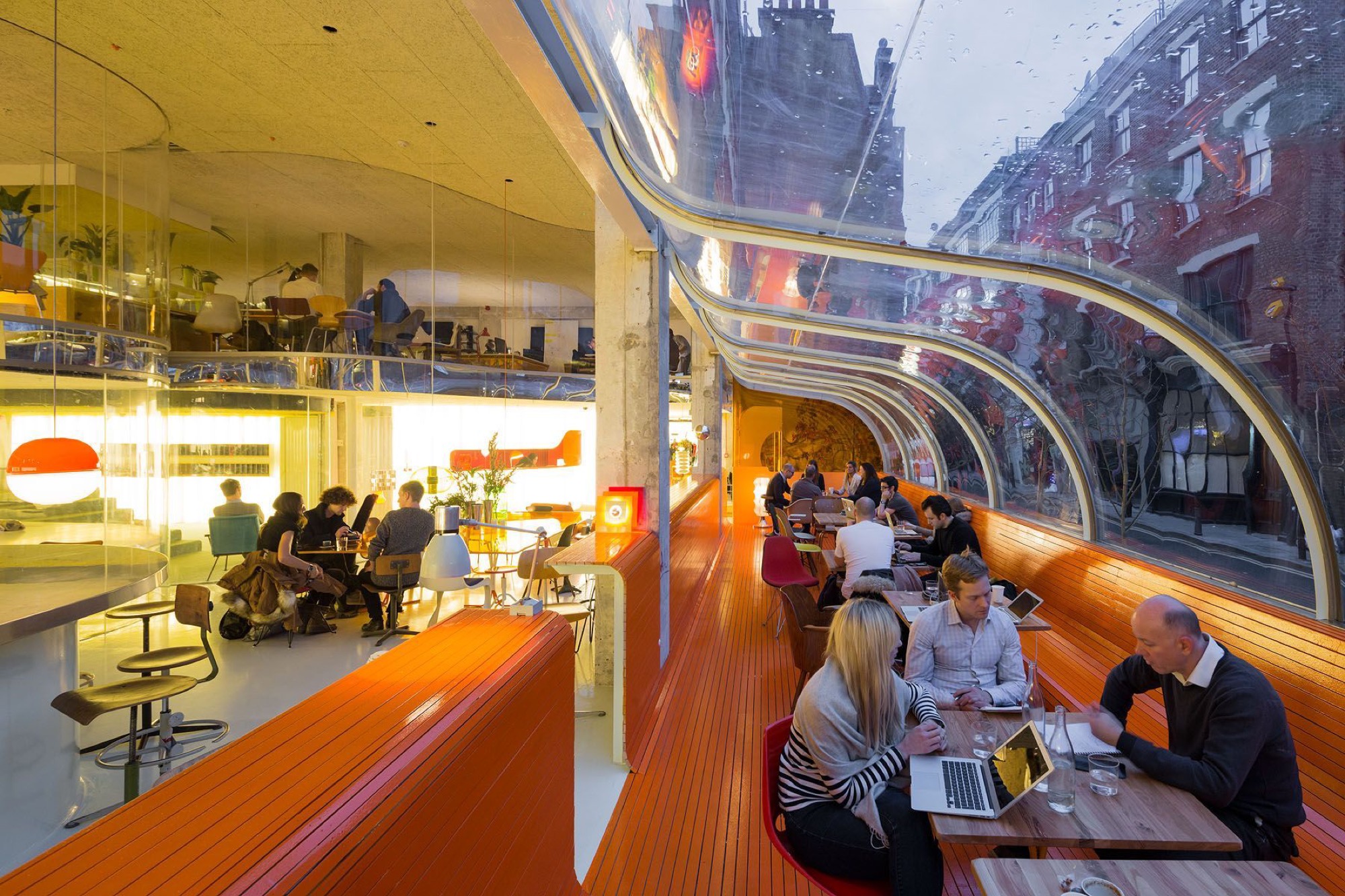
When working with Second Home, an organisation works on providing co-working space, they came to my house/office and said they wanted us to create something similar to what we have here. Probably people would appreciate a working space that gives them the feeling like home. Responding to the request, we finally got involve in everything, from design to building and even choosing furniture.
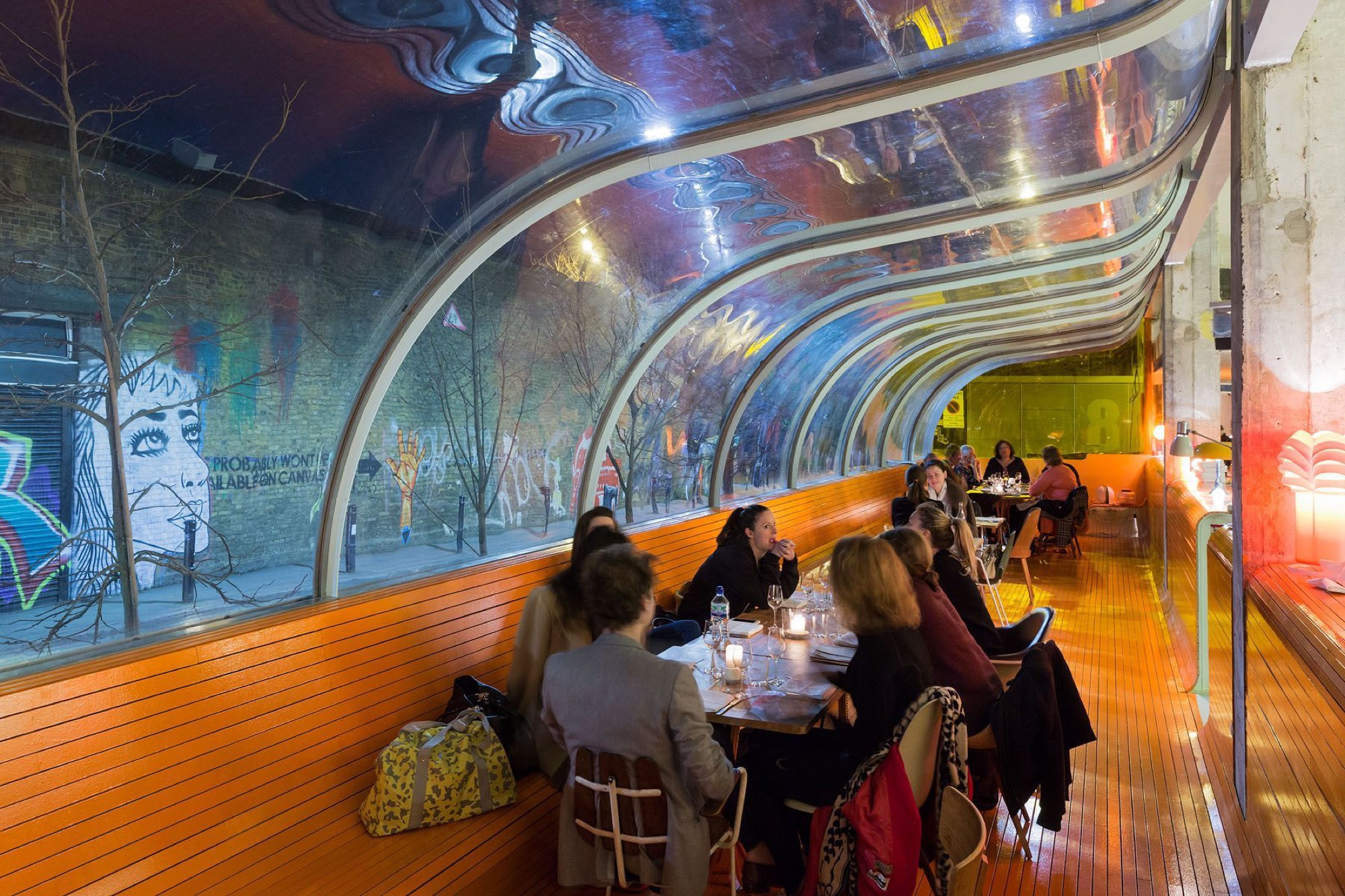
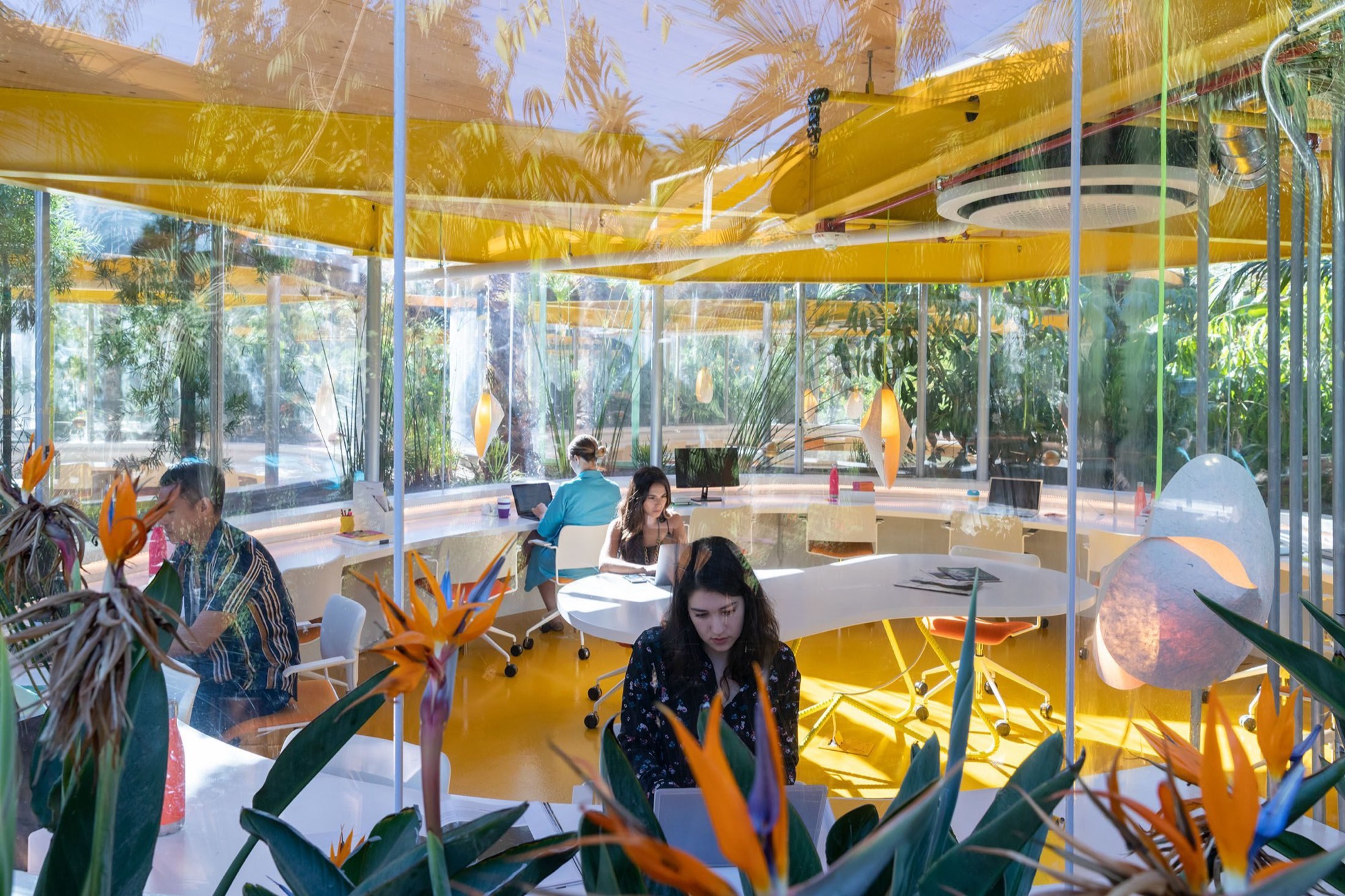
THE FUTURE OF ARCHITECTURE IS ABOUT RENOVATING AND REUSING OLD CONSTRUCTIONS
I think the future architecture is going to be more for reusing things that we have already constructed. For instance at Second Home, most of the projects are reusing old buildings and we are happy to do that. Now we have other places in that sense so for us it is fantastic. Here in Spain, we have plenty of abilities and I guess other places in the world, there are many abandoned homes. People in the cities are complaining about how expensive is a house and so on. We want to go to the countryside and get a house or an old factory or whatever and then renovate the place, it makes more sense to create something from scratch. For us, if people request us for renovation project, we feel very happy if we do. Typically, we do not need to go from the beginning but that is cool. This is the future of architecture.
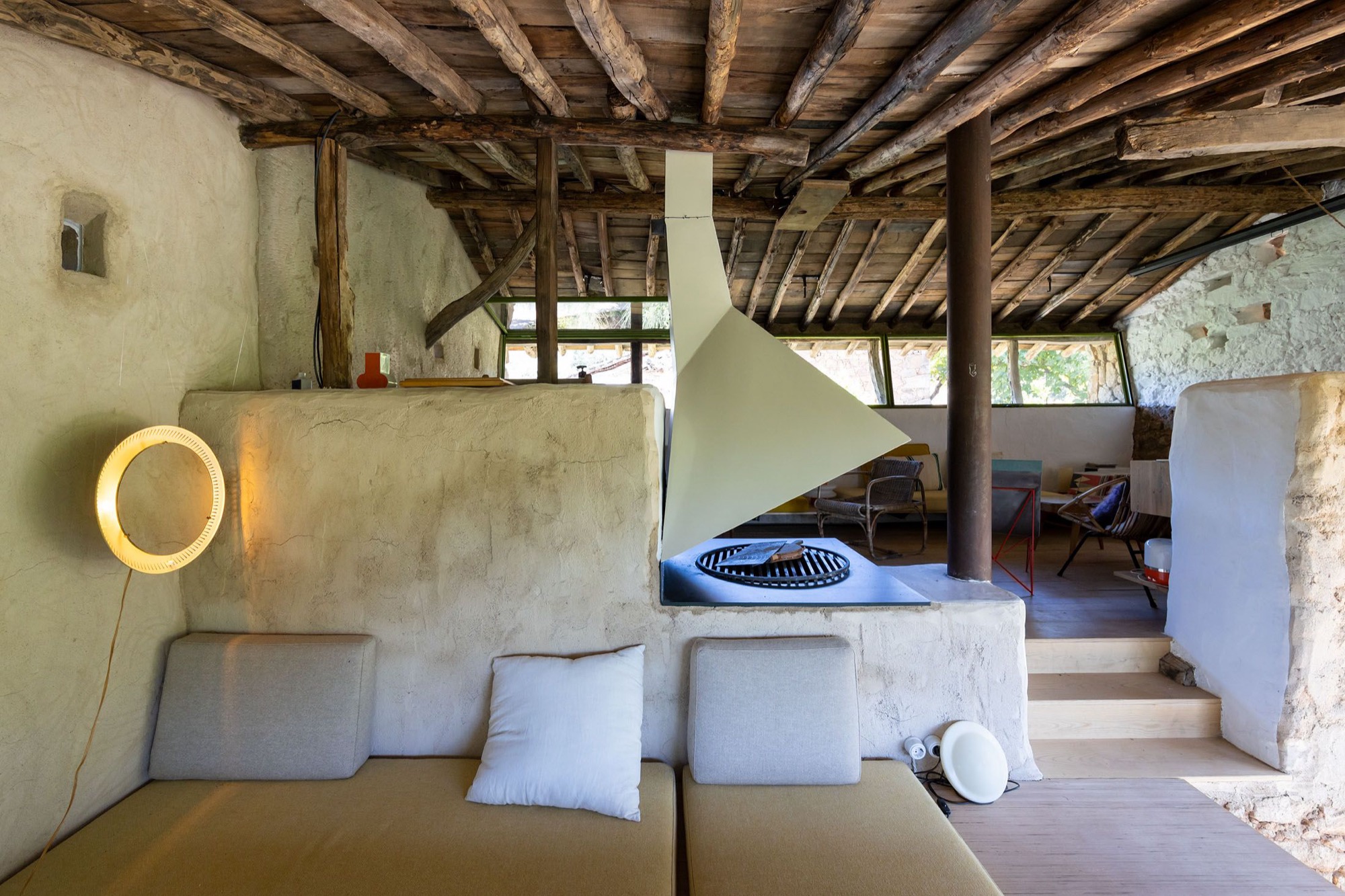
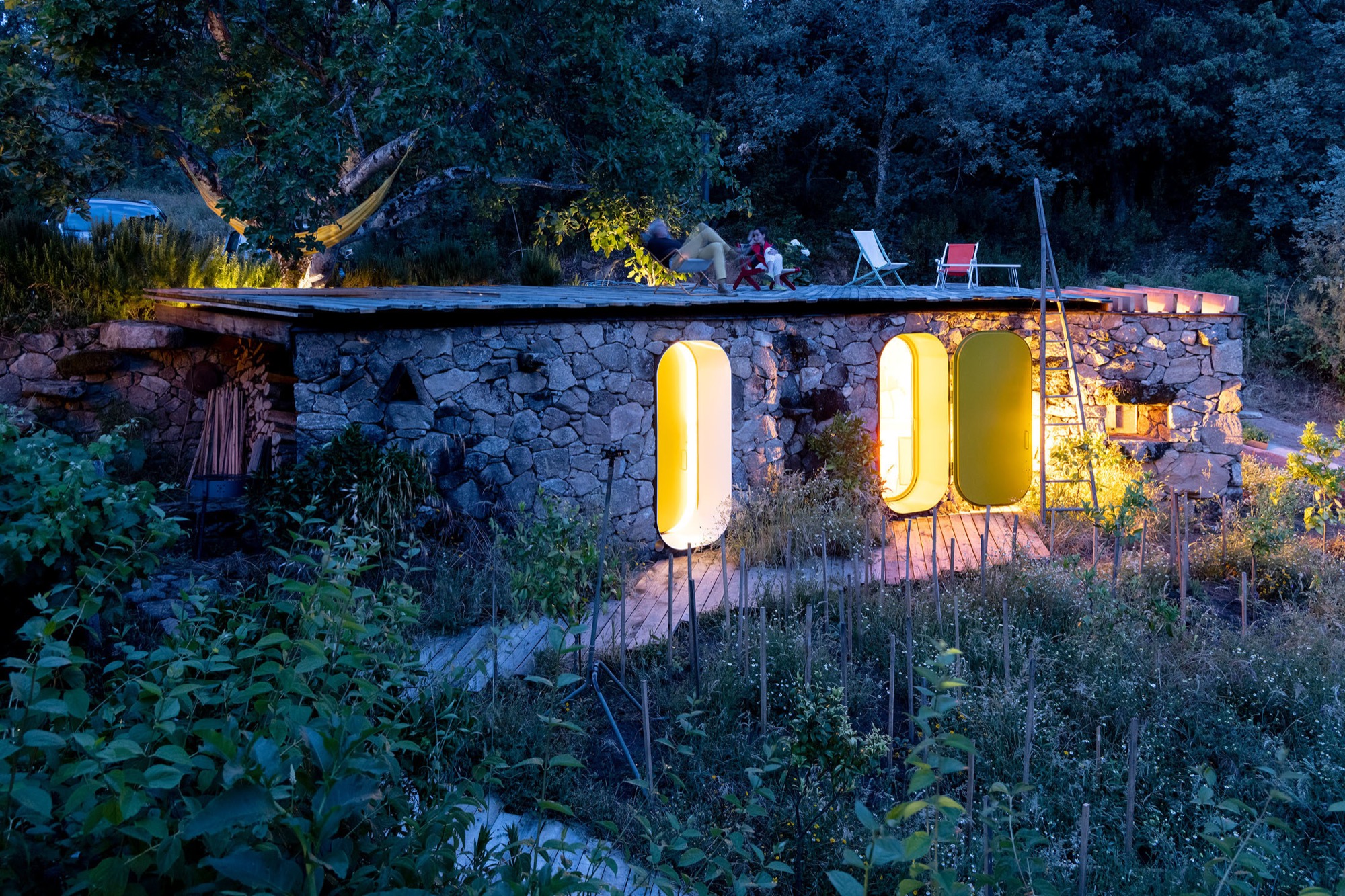
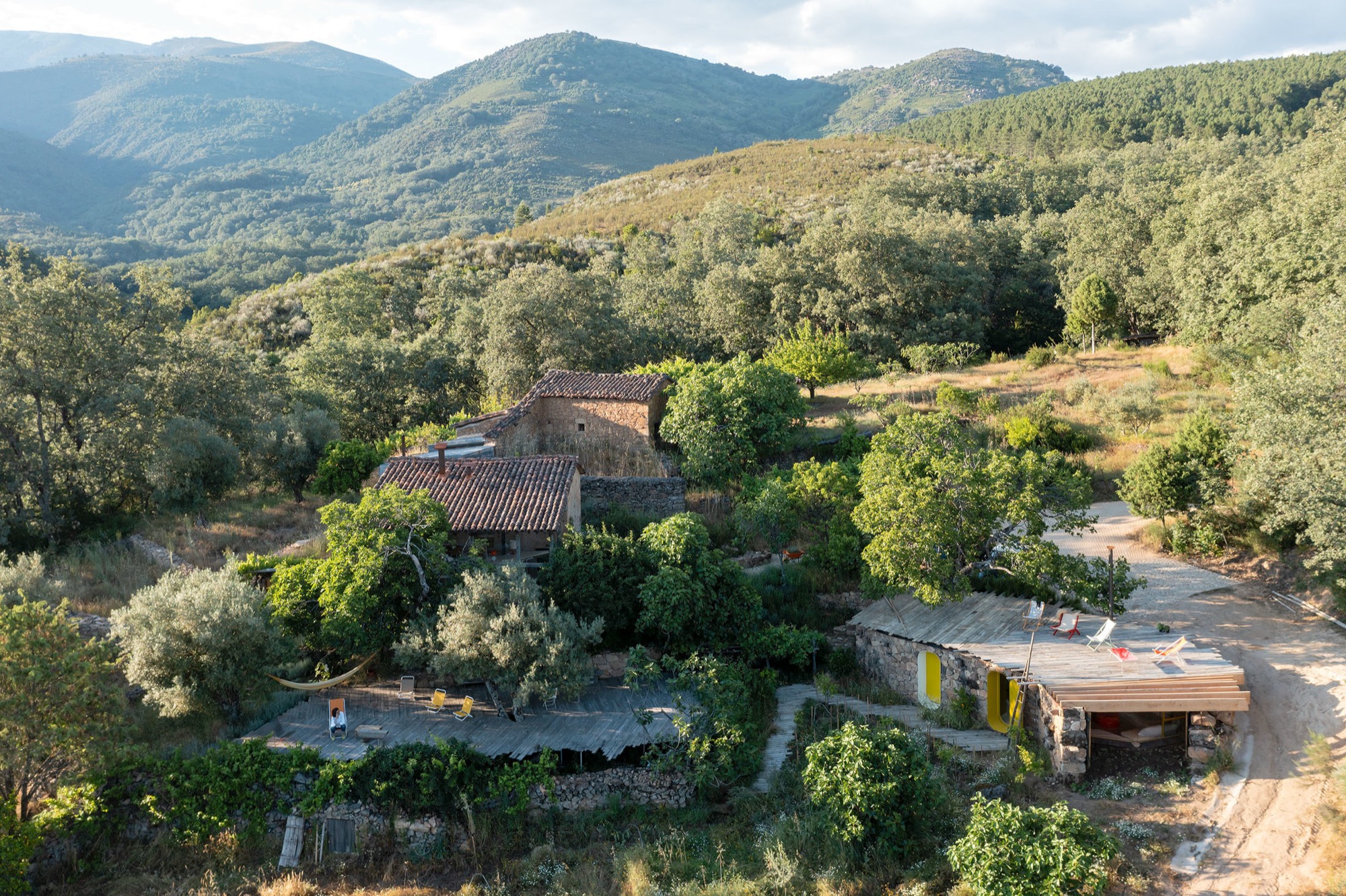
COLOUR IS A MATERIAL
To us, colour is a flexible material. For instance, the beam in my house I painted in orange and the rest of the place is white. We colour when we need to, 90% the colour we use is white throughout all projects of SelgasCano, the 10% left is colour from the palette. On the floor you cannot use white or black because there are dust and dirt, unless you are using concrete or rubber or other materials for it. At that point you will need to choose a colour.
Orange is pretty good for flooring, people feel safe walking on it without being scared of leaving footprints or dirt. When you have the light effect on orange which gives you this effect of cosiness and warmth for the whole room. We do not use much green inside building because it brings artificial effect, but of course you can you it in some cases. I think we have used most of the colour at the end, we try everything especially white.
